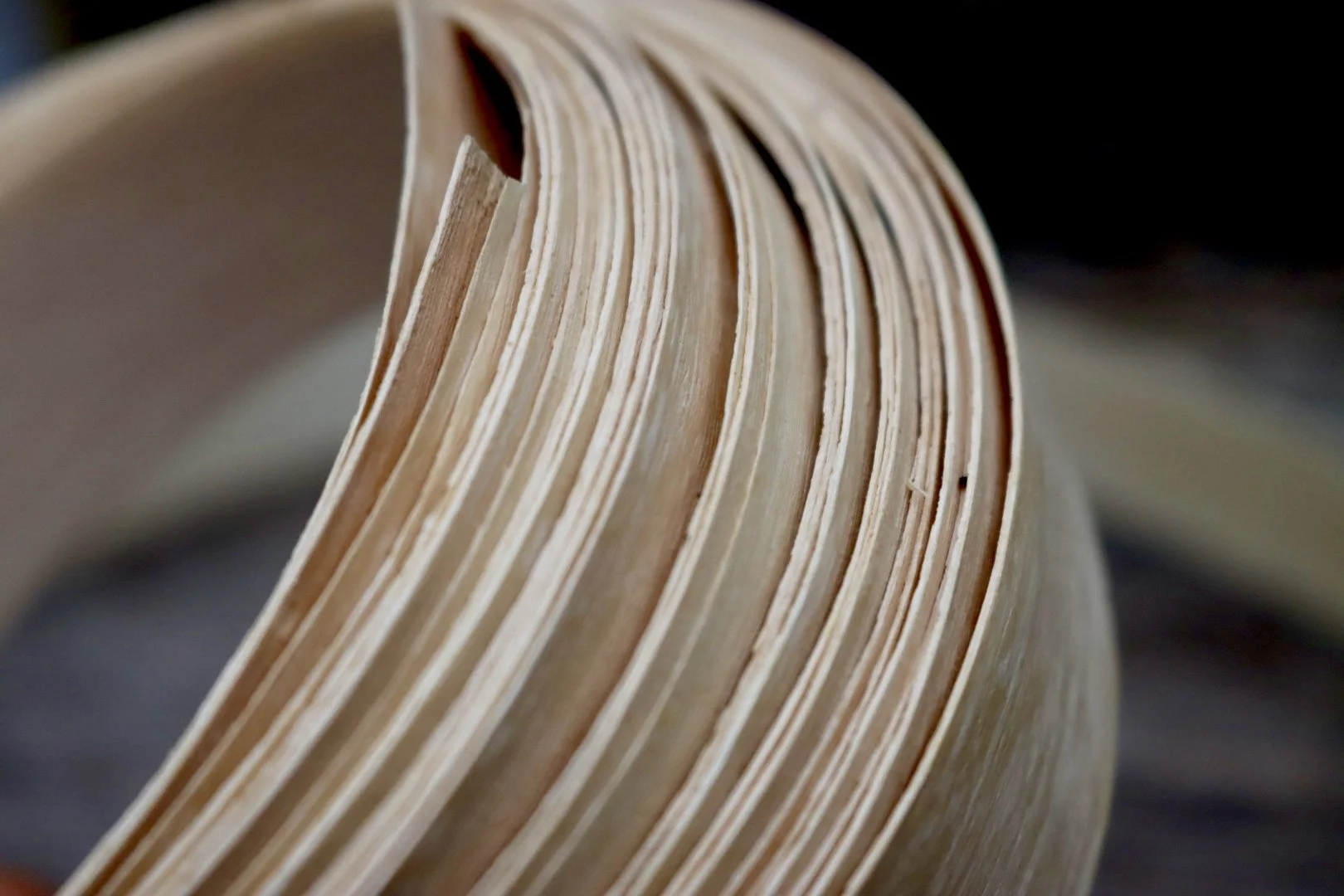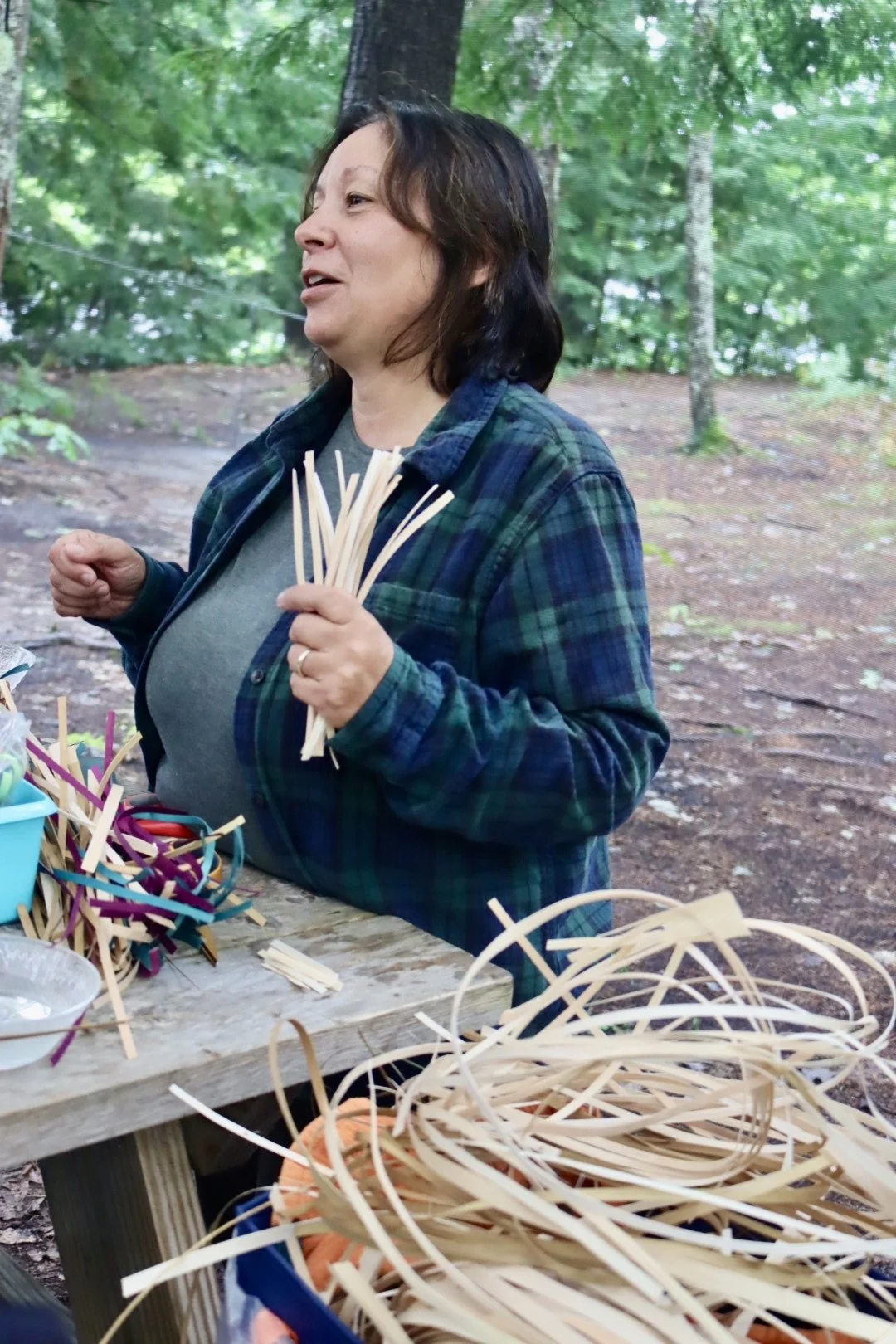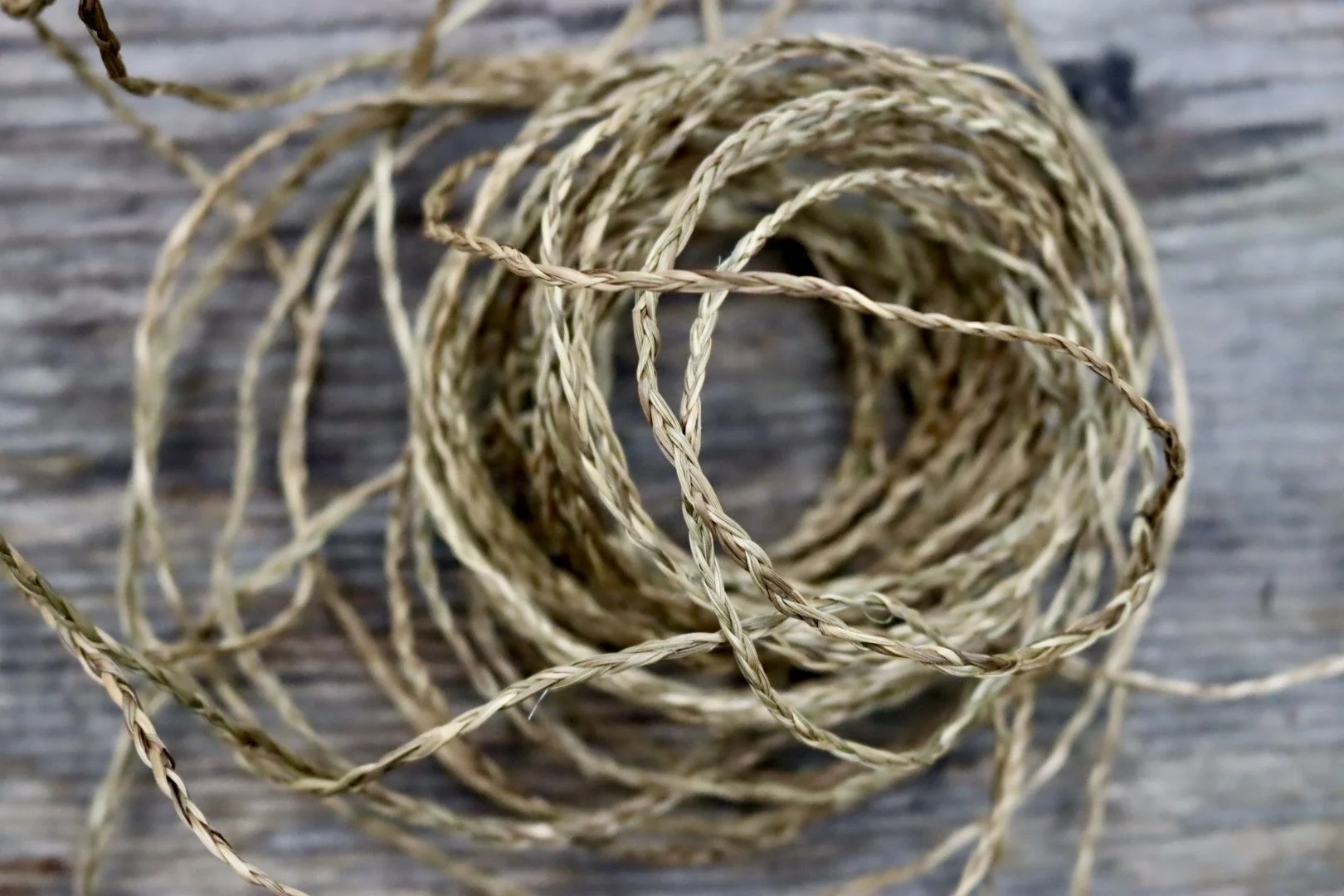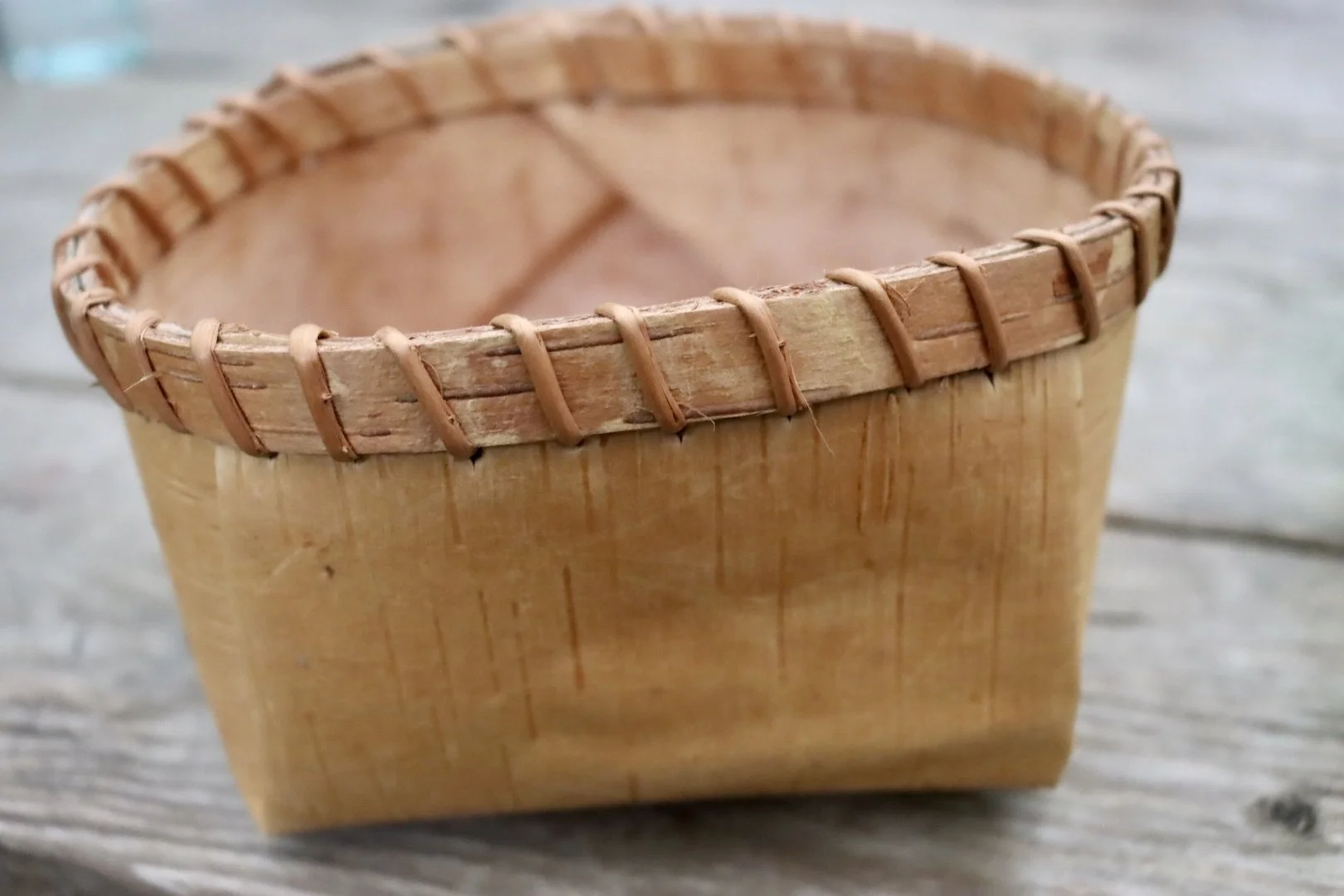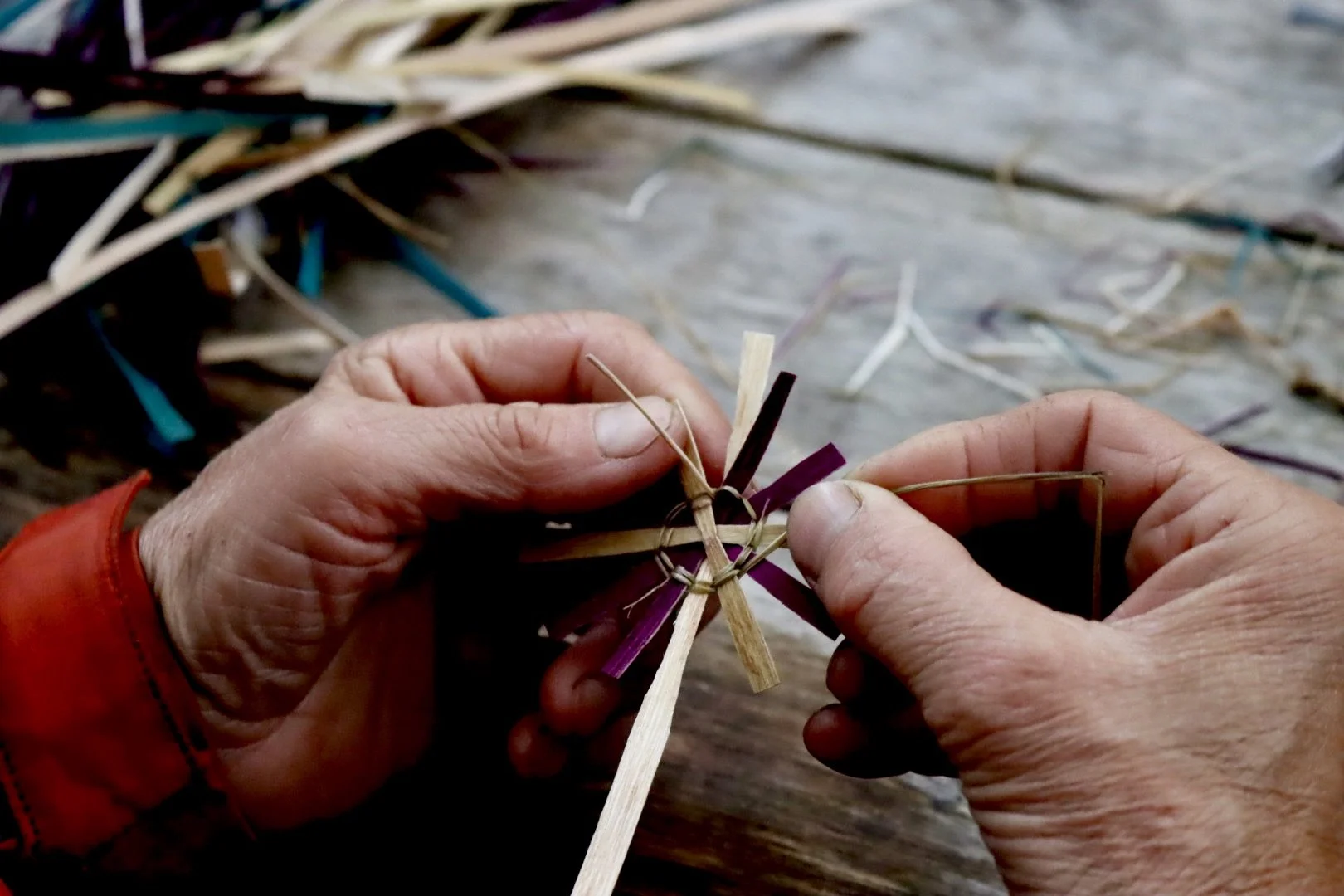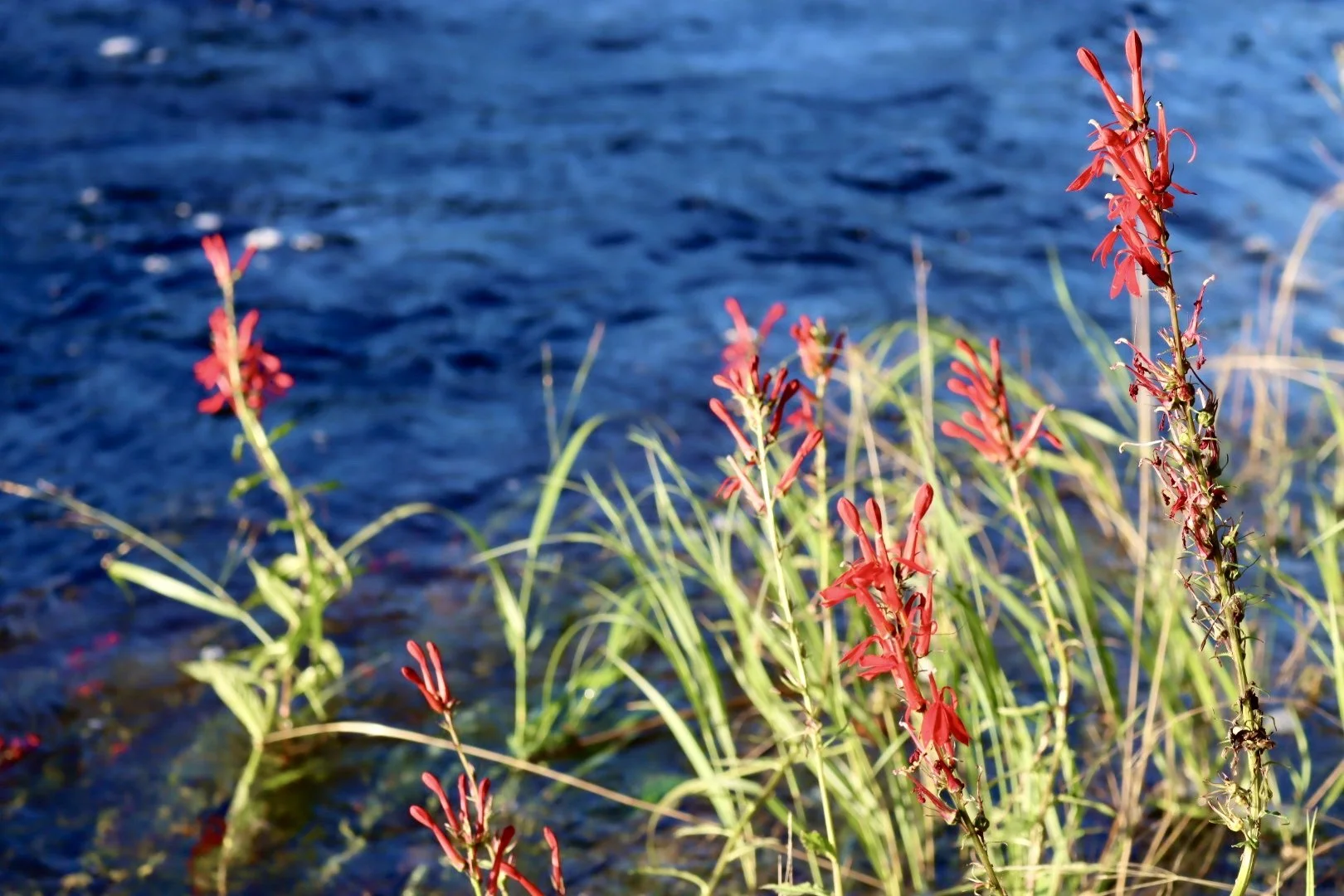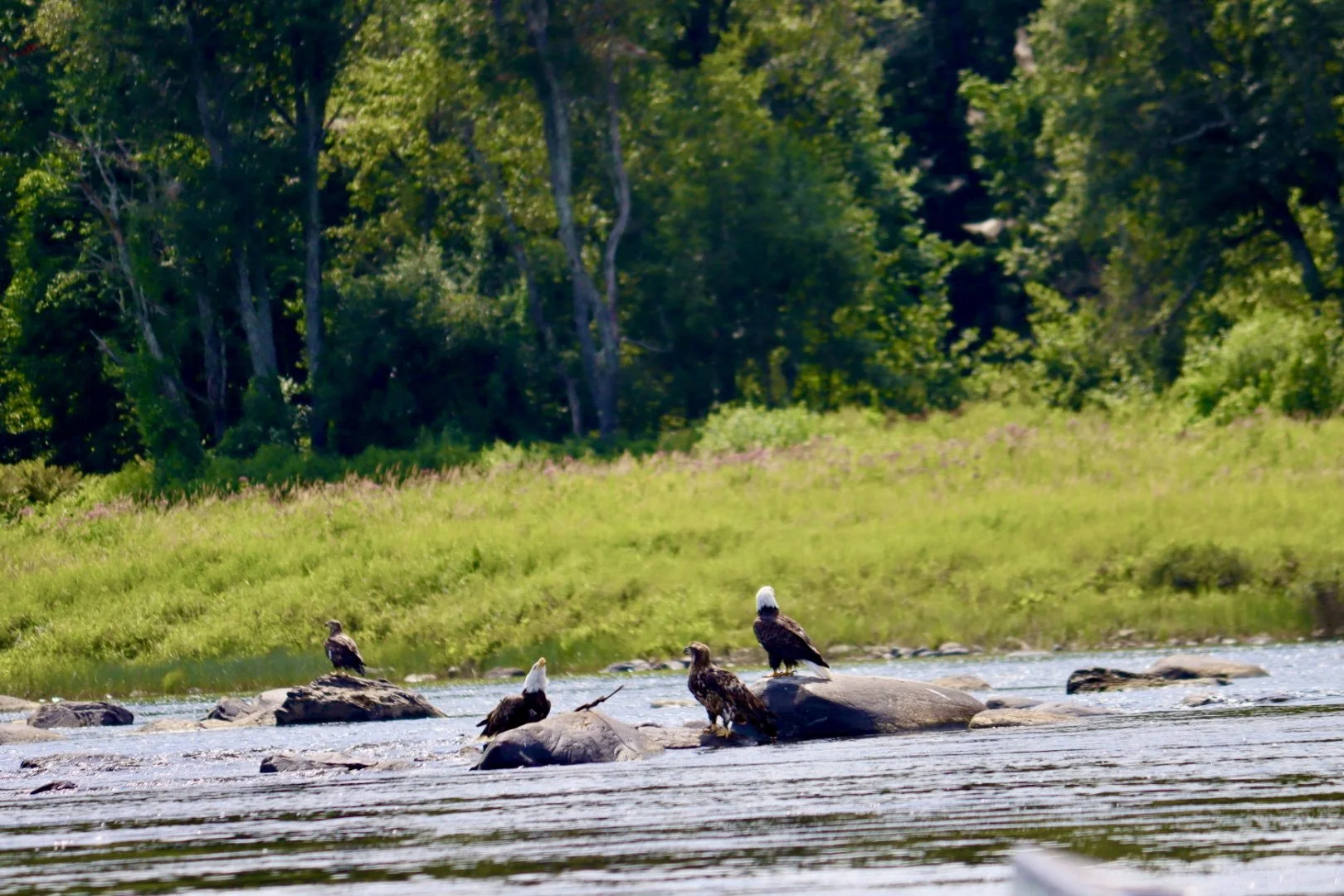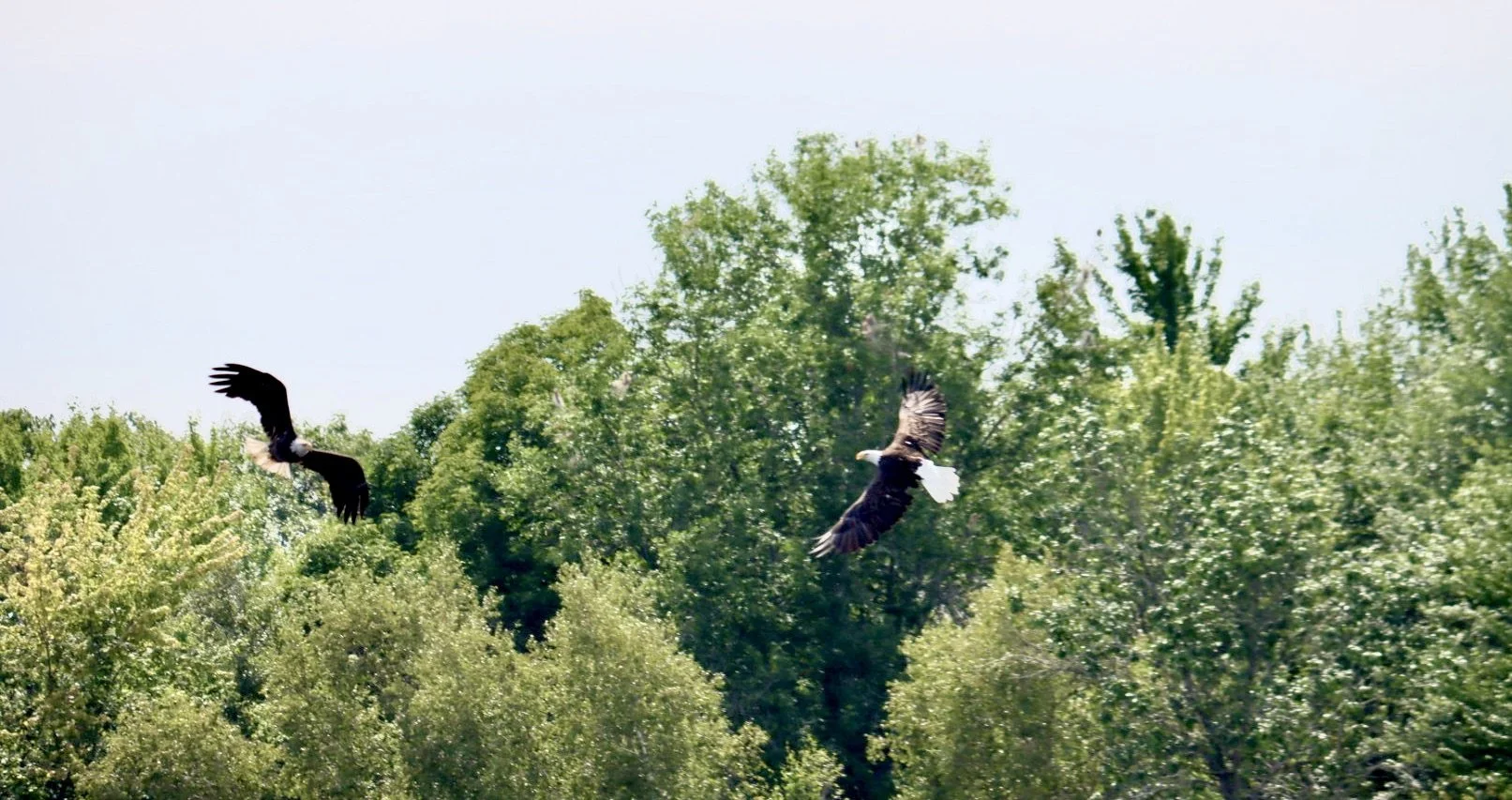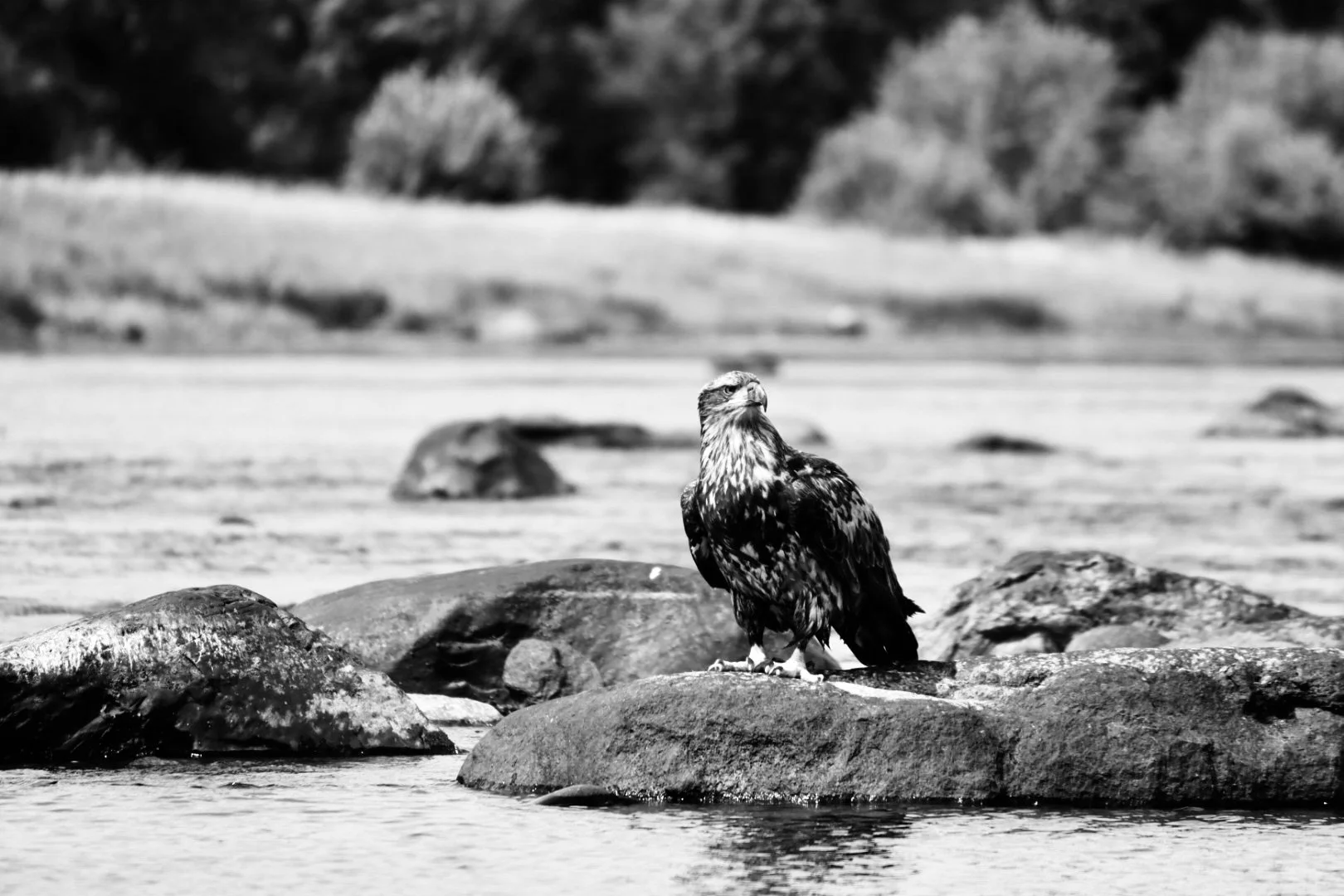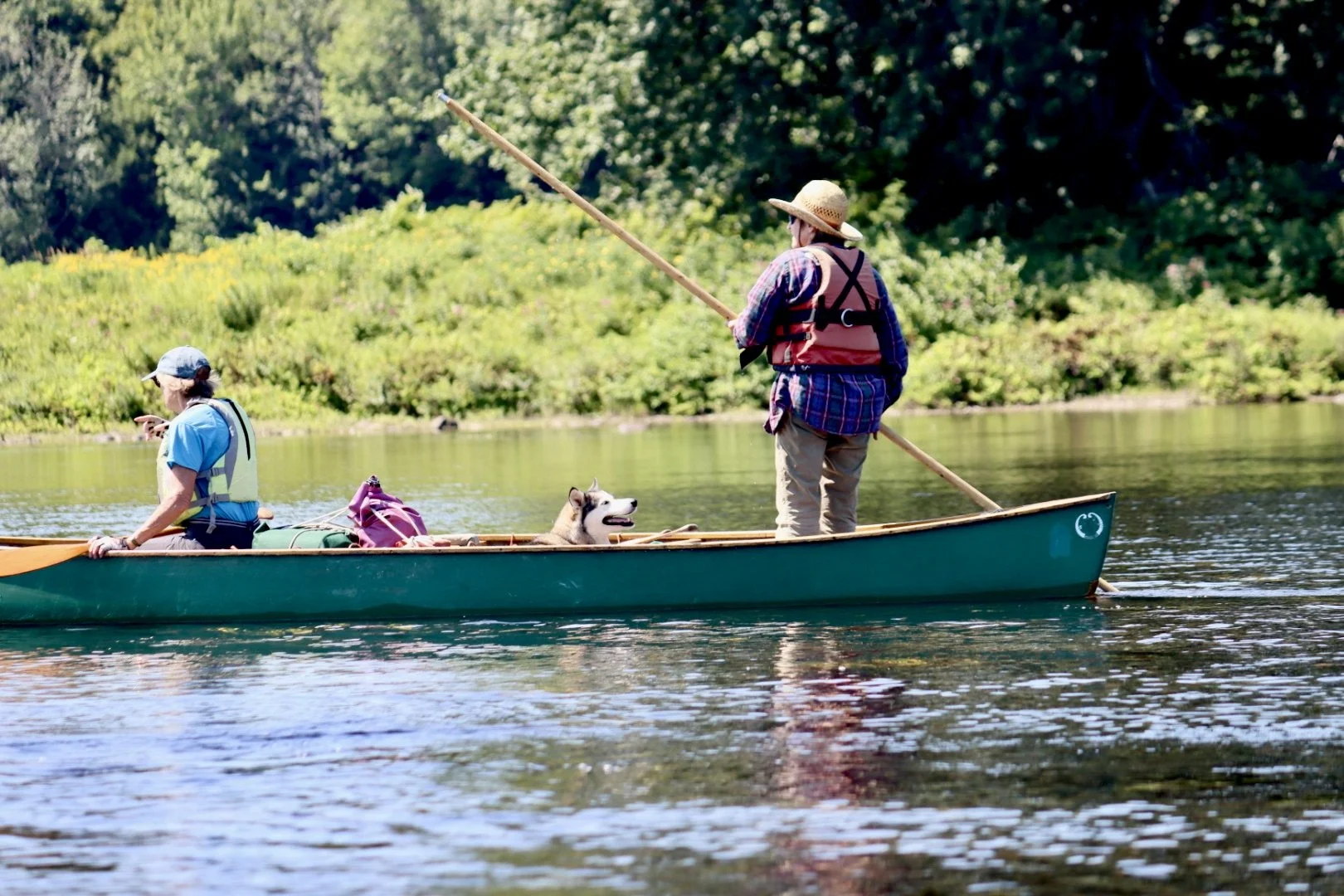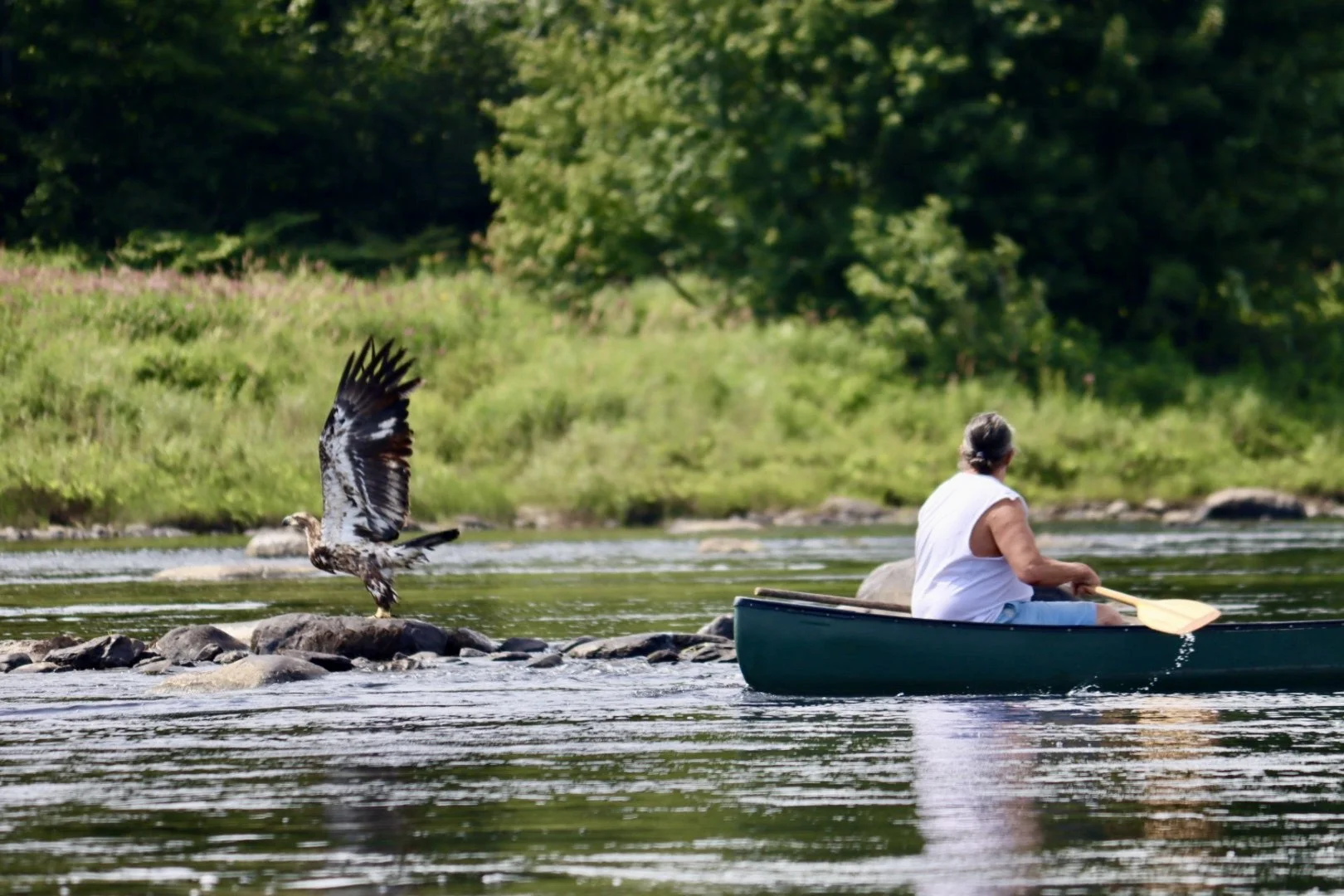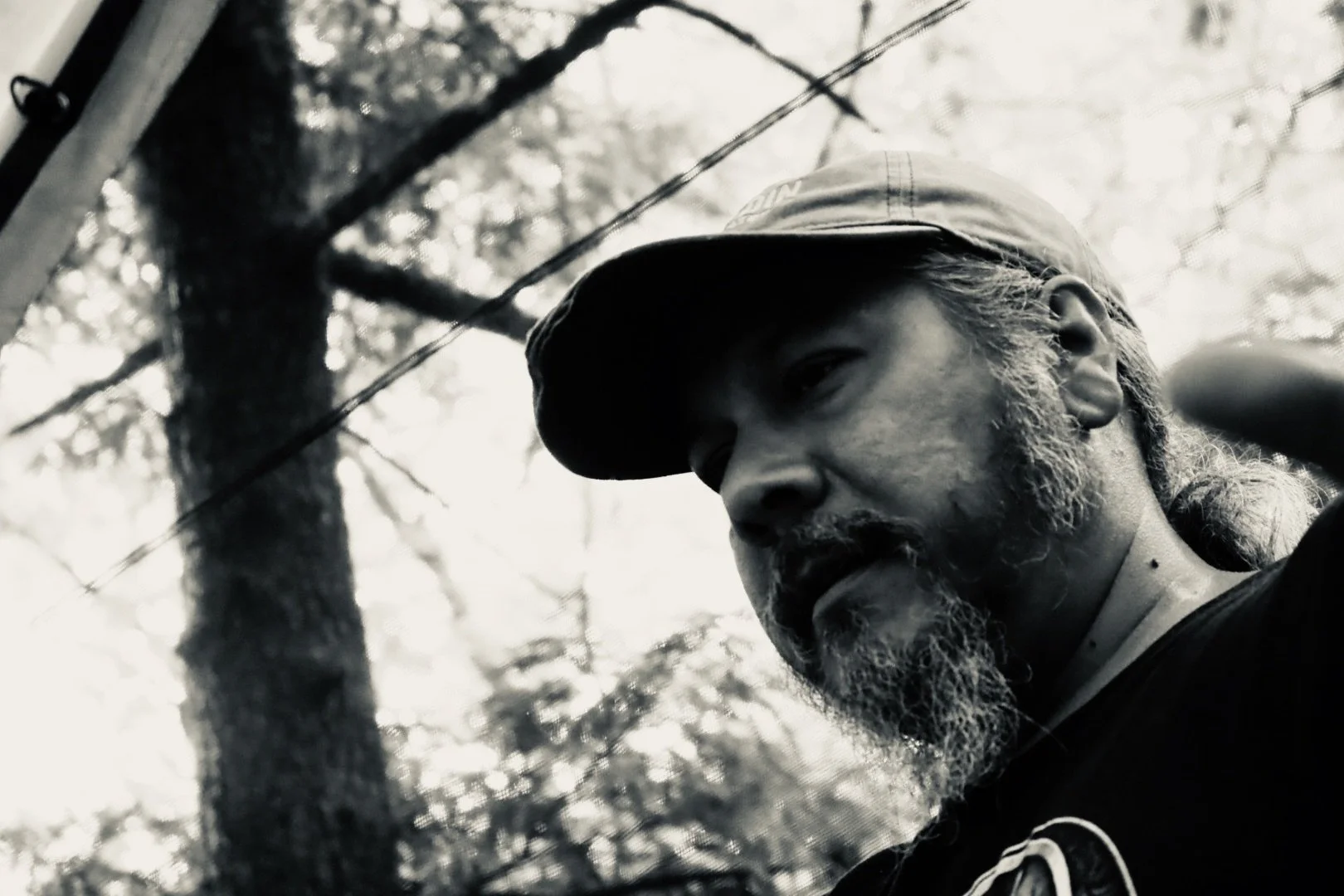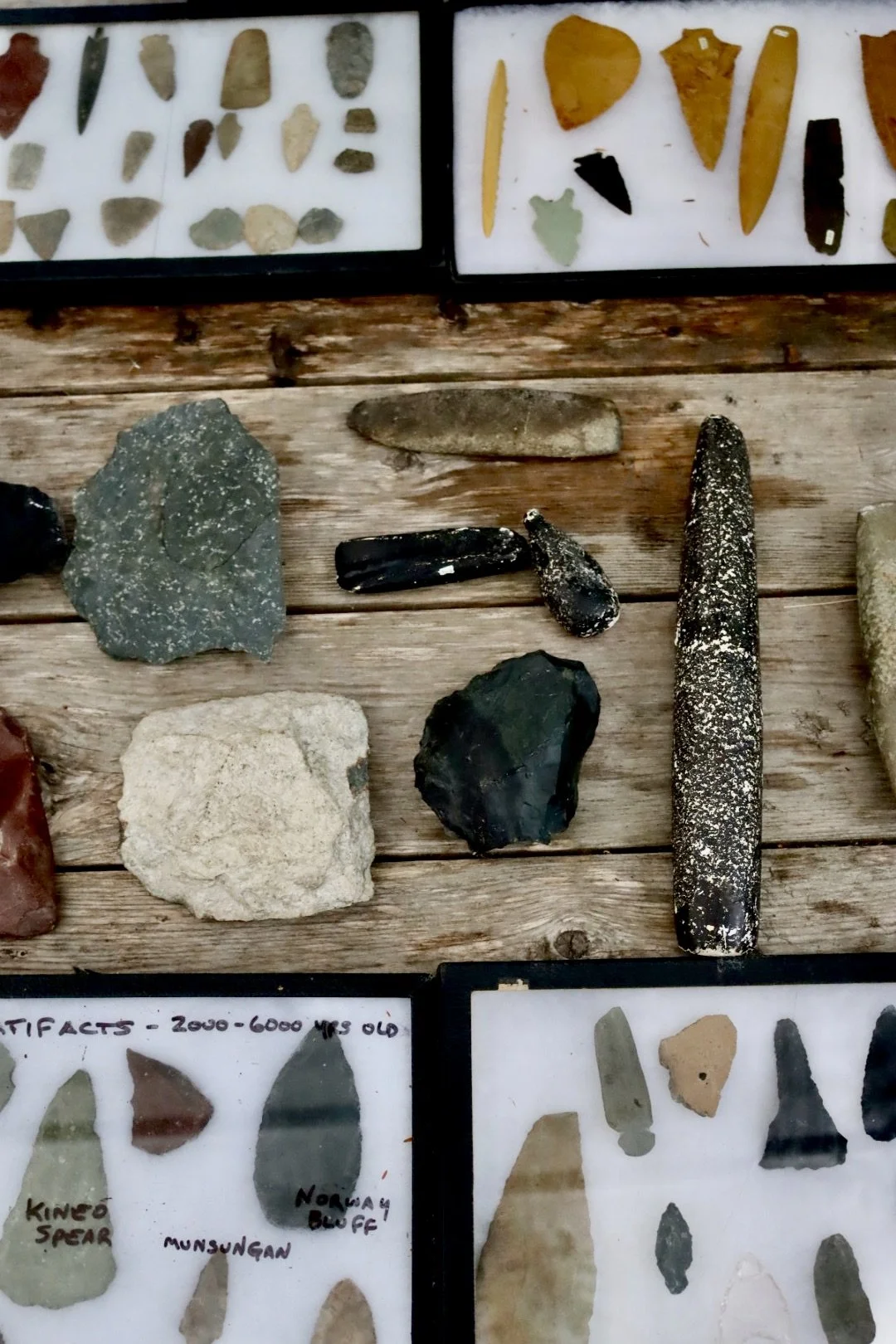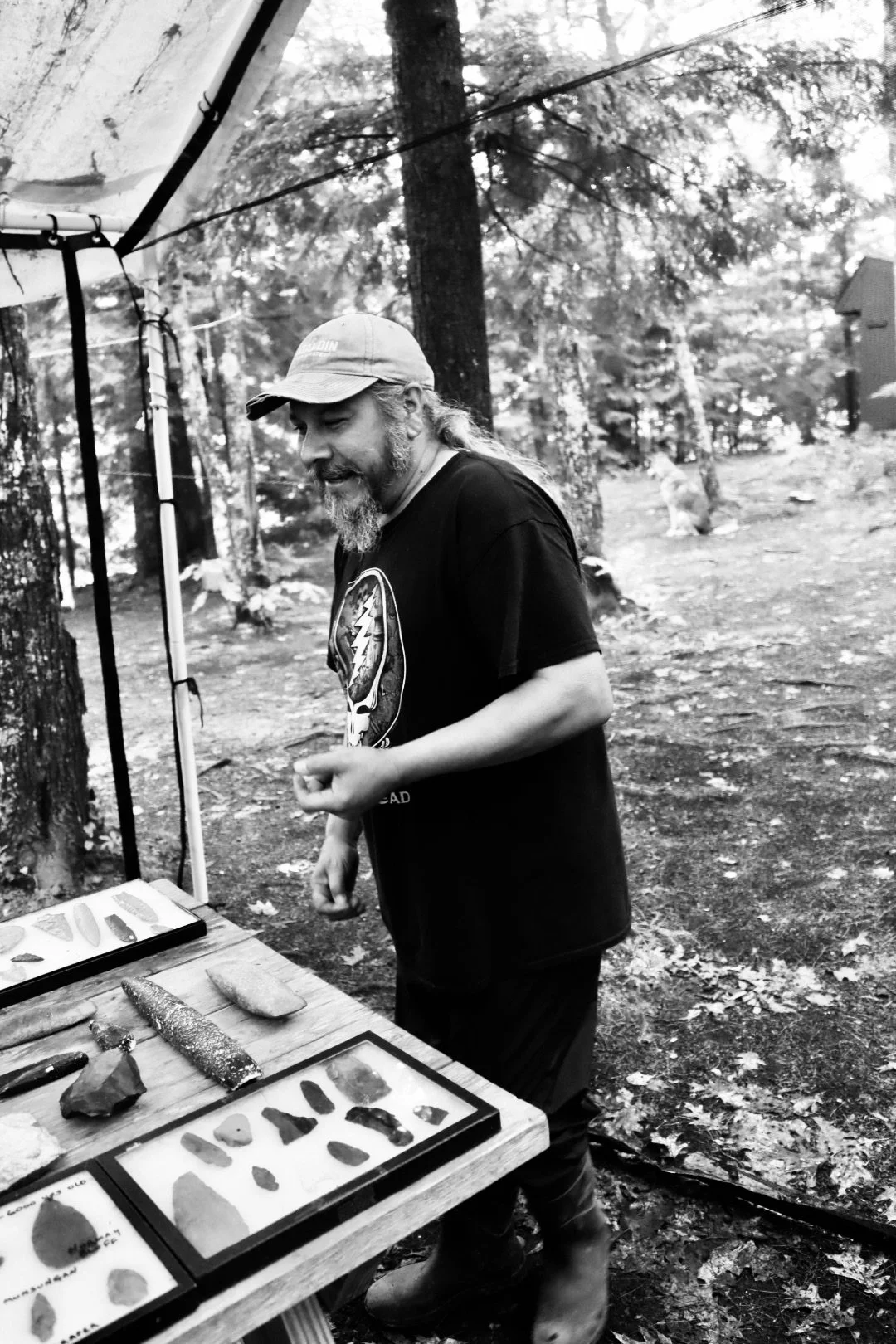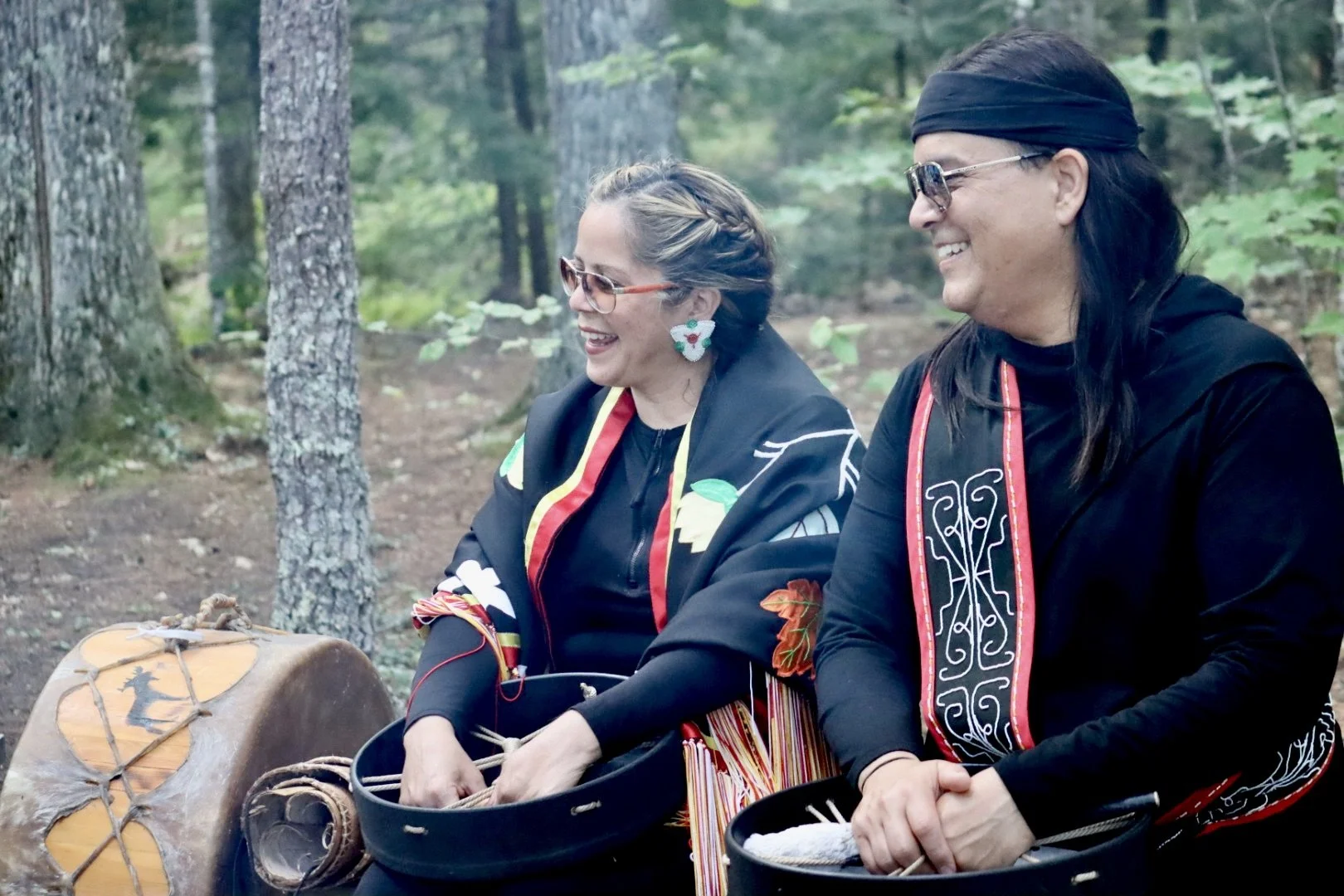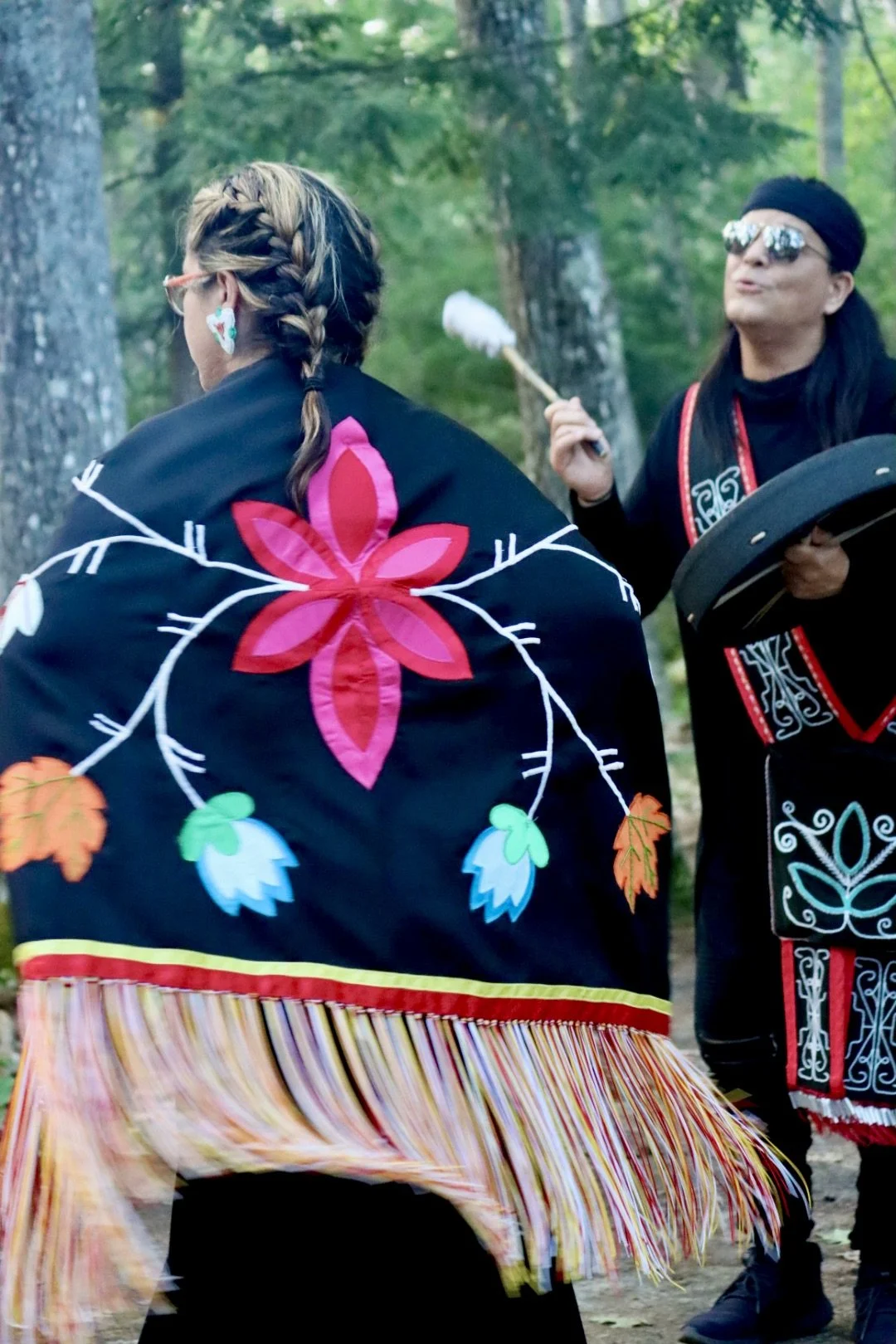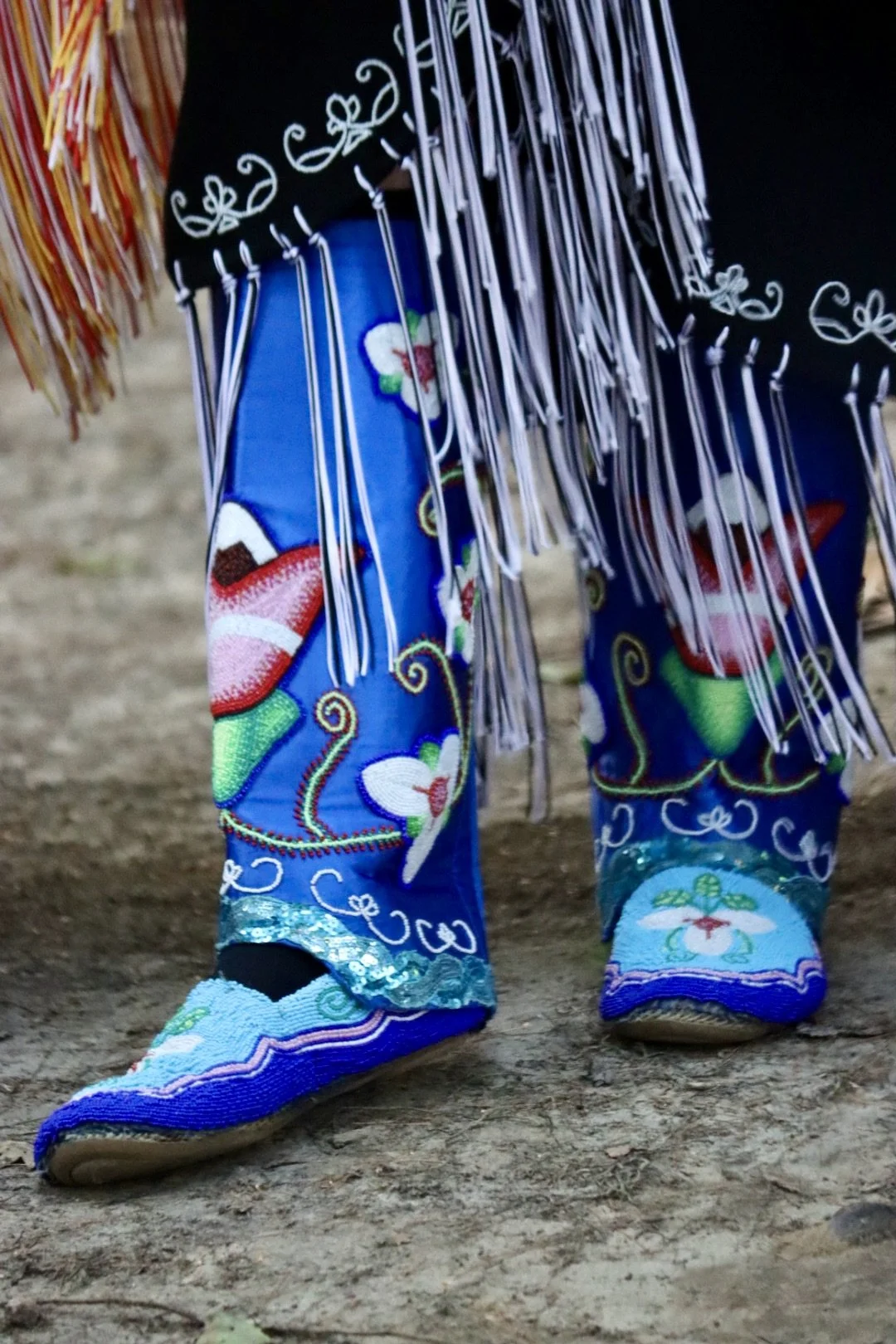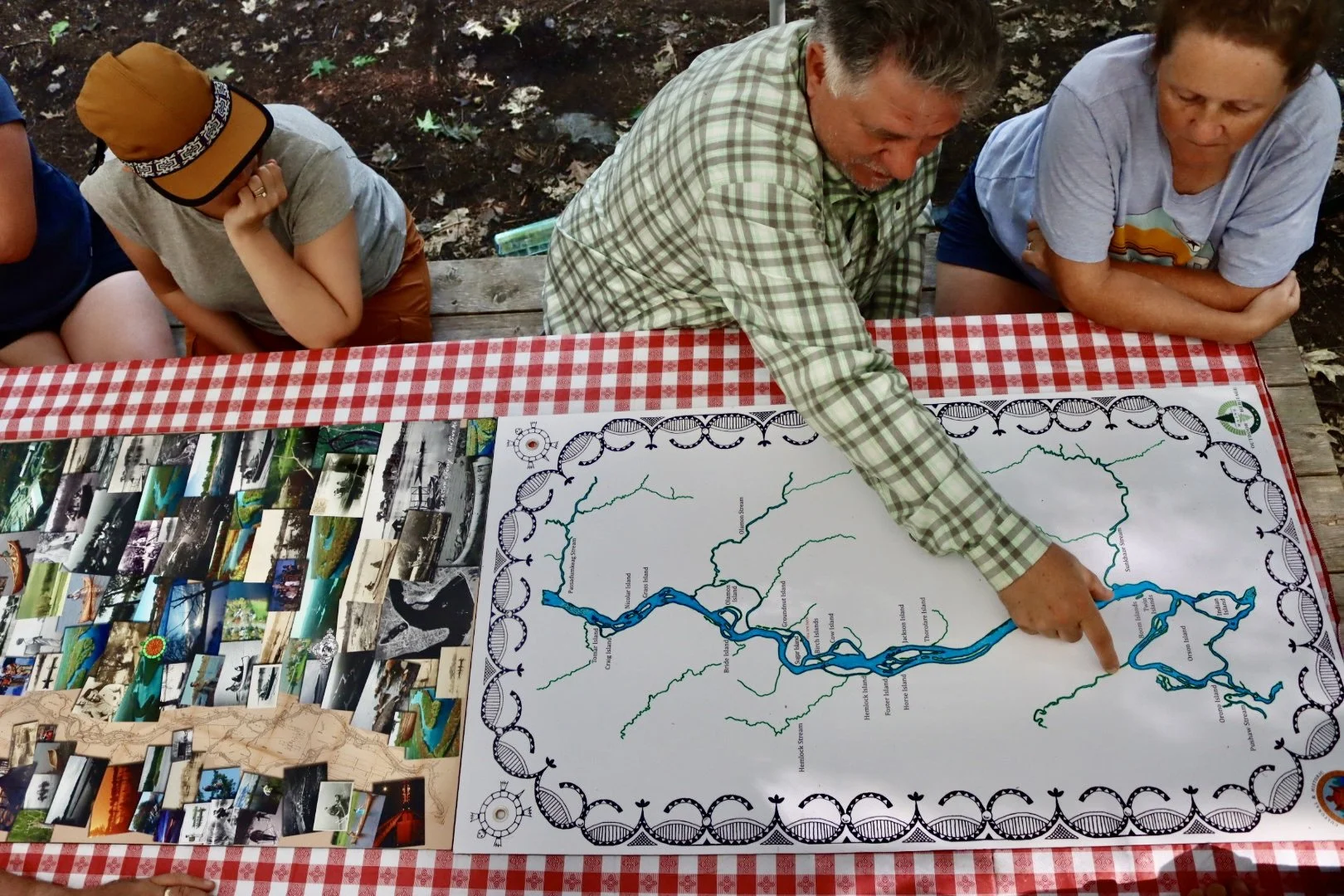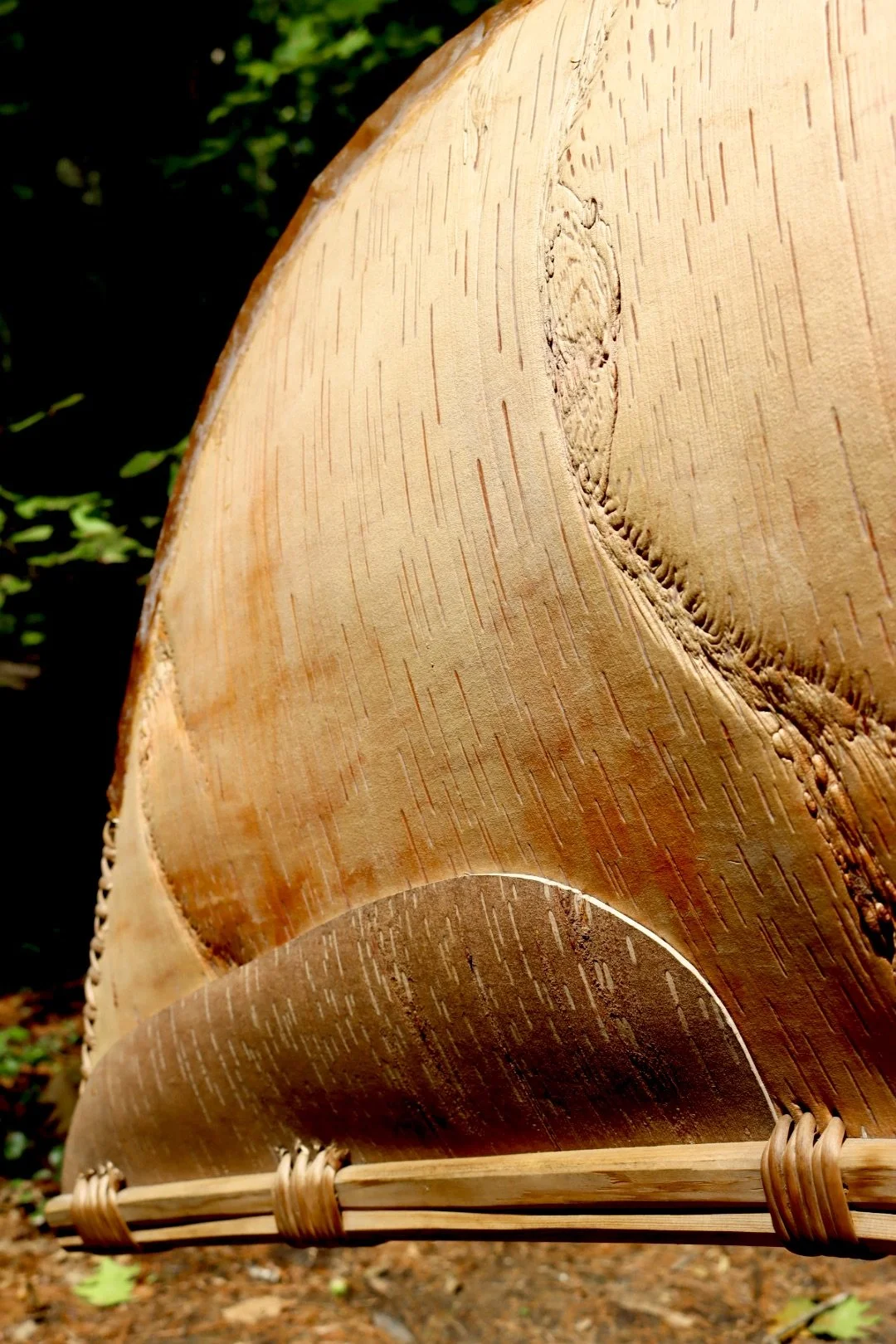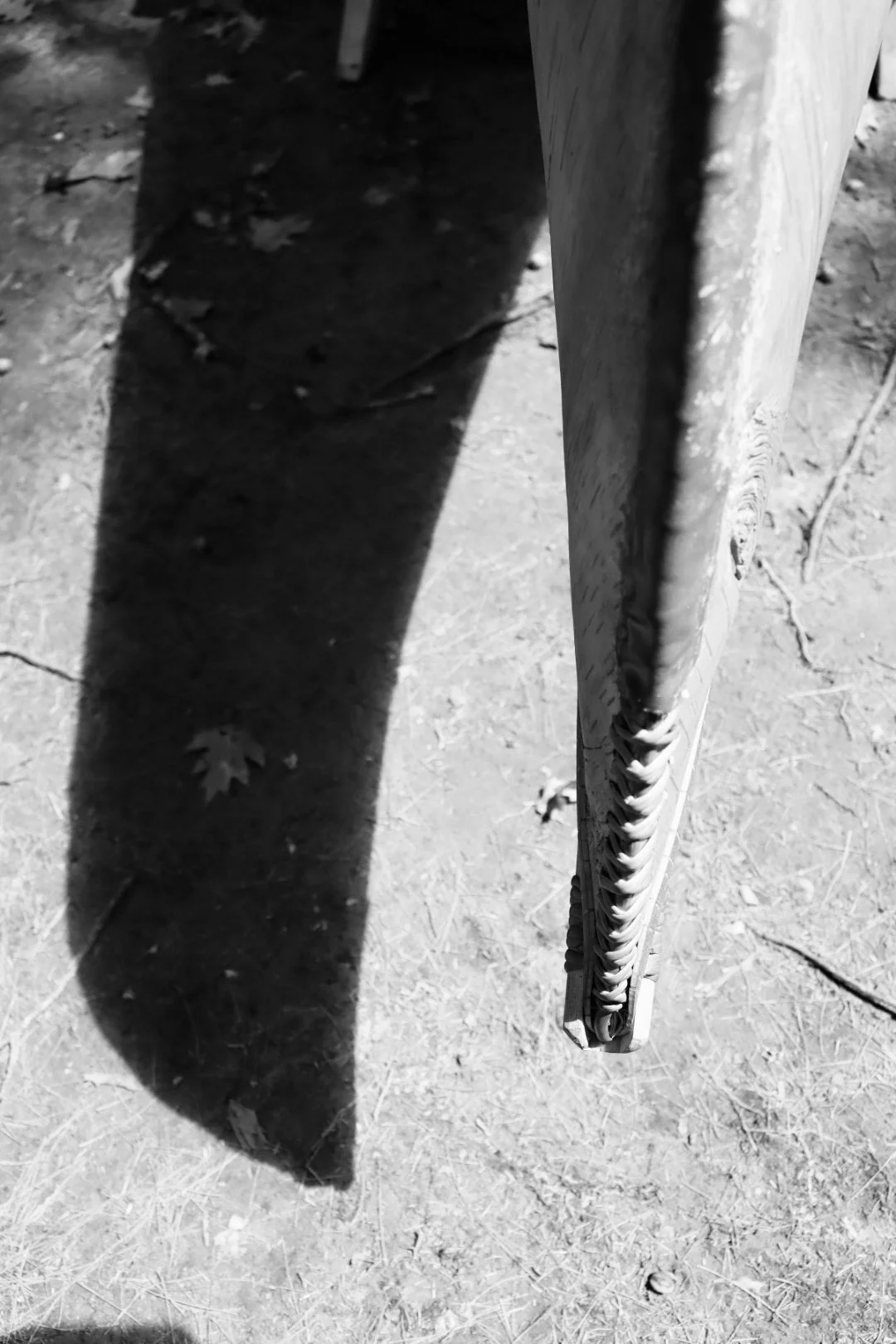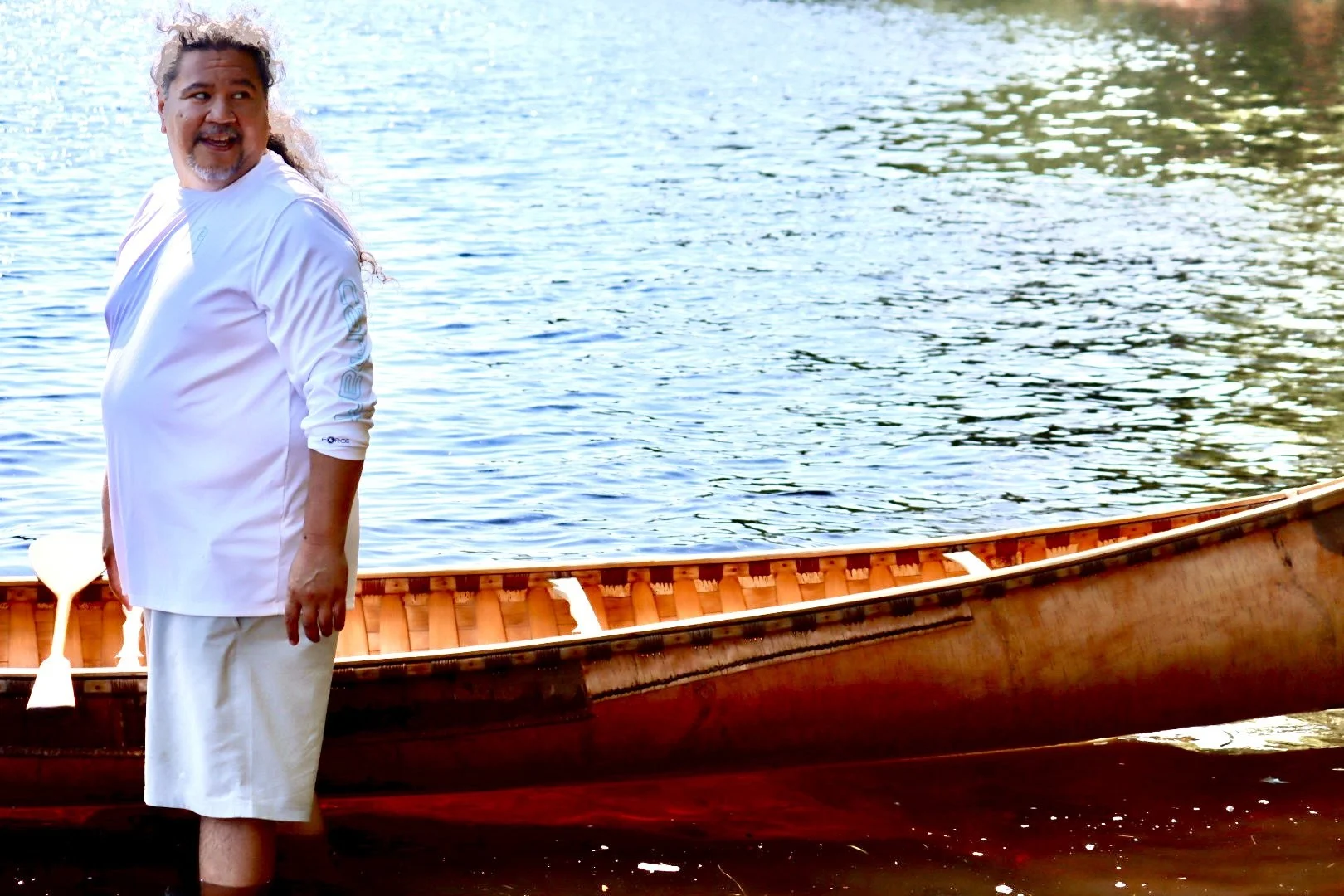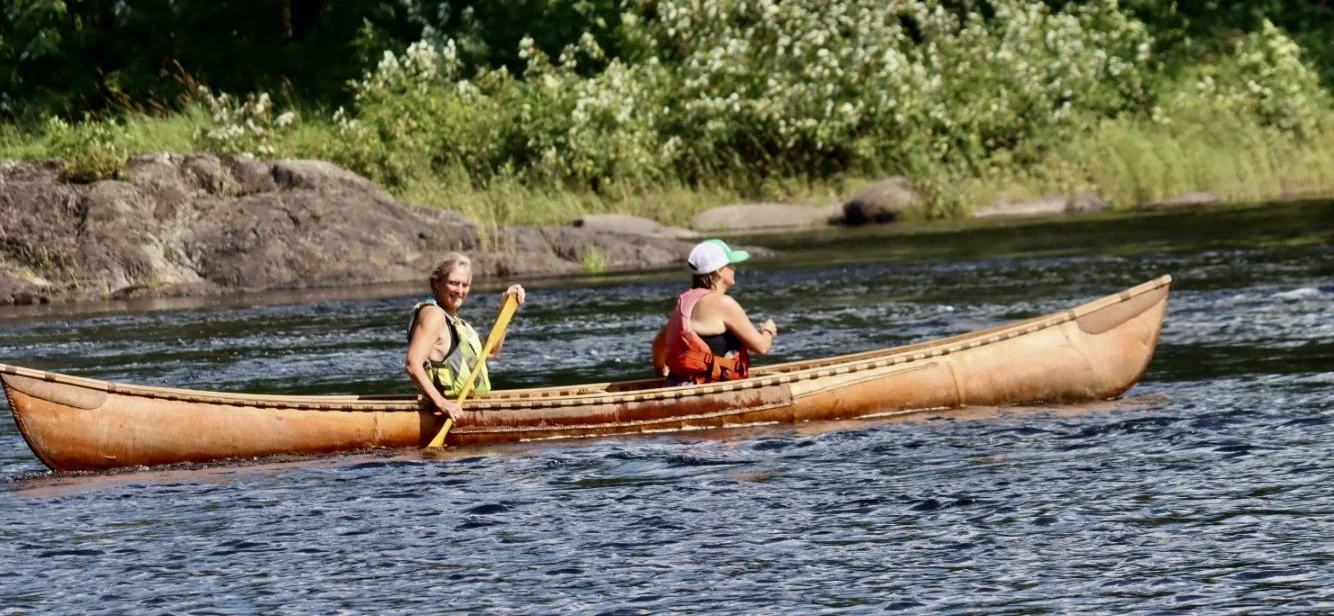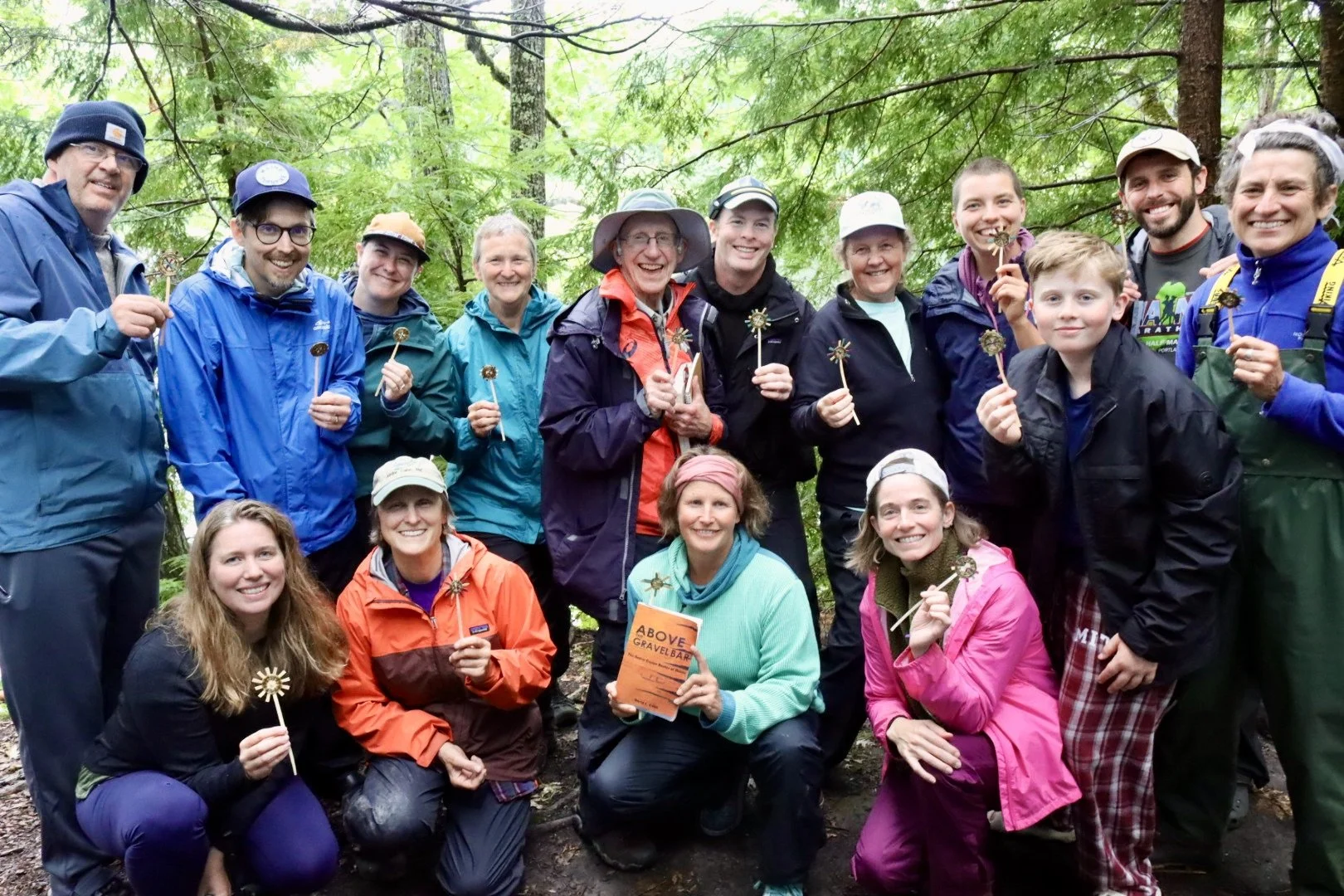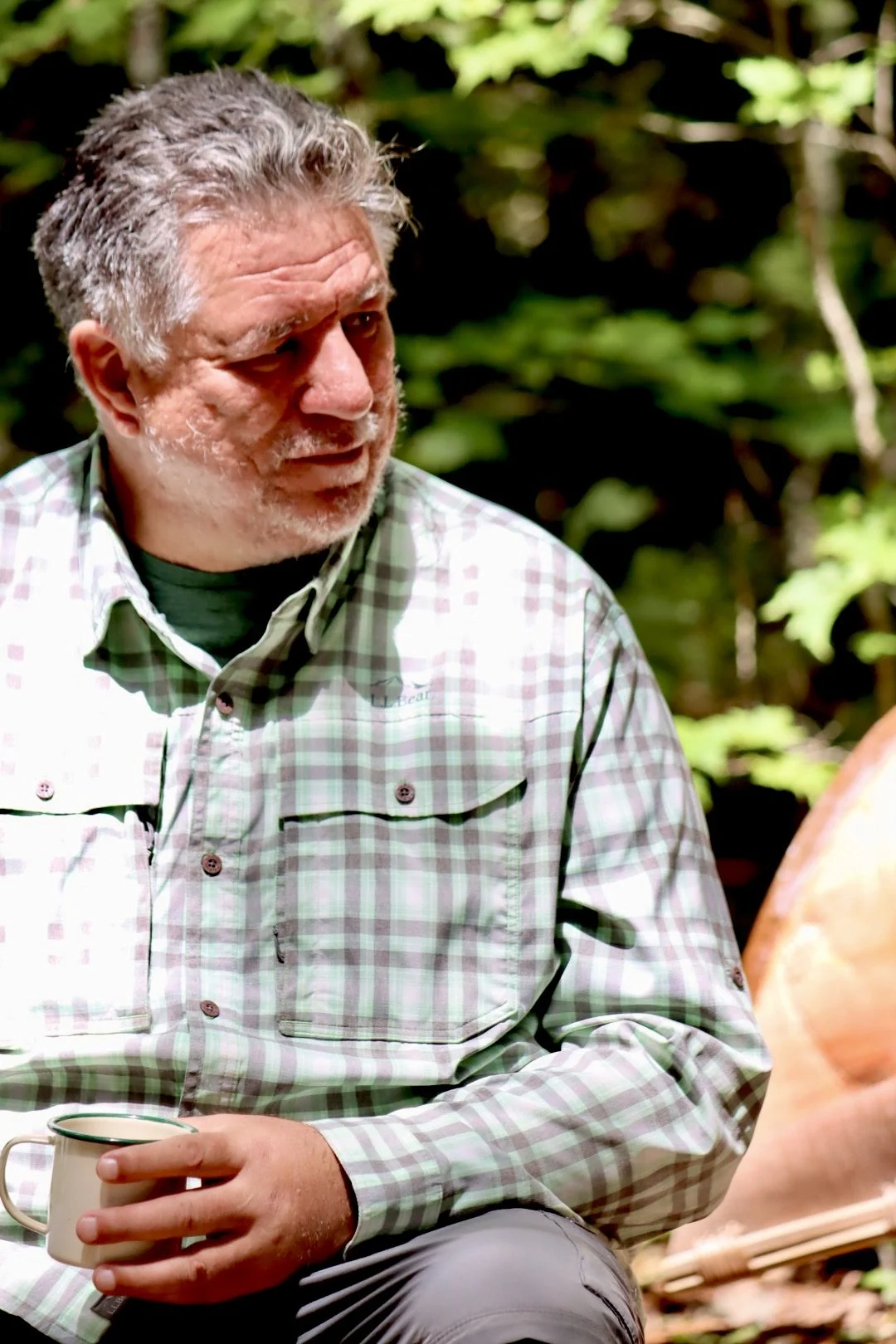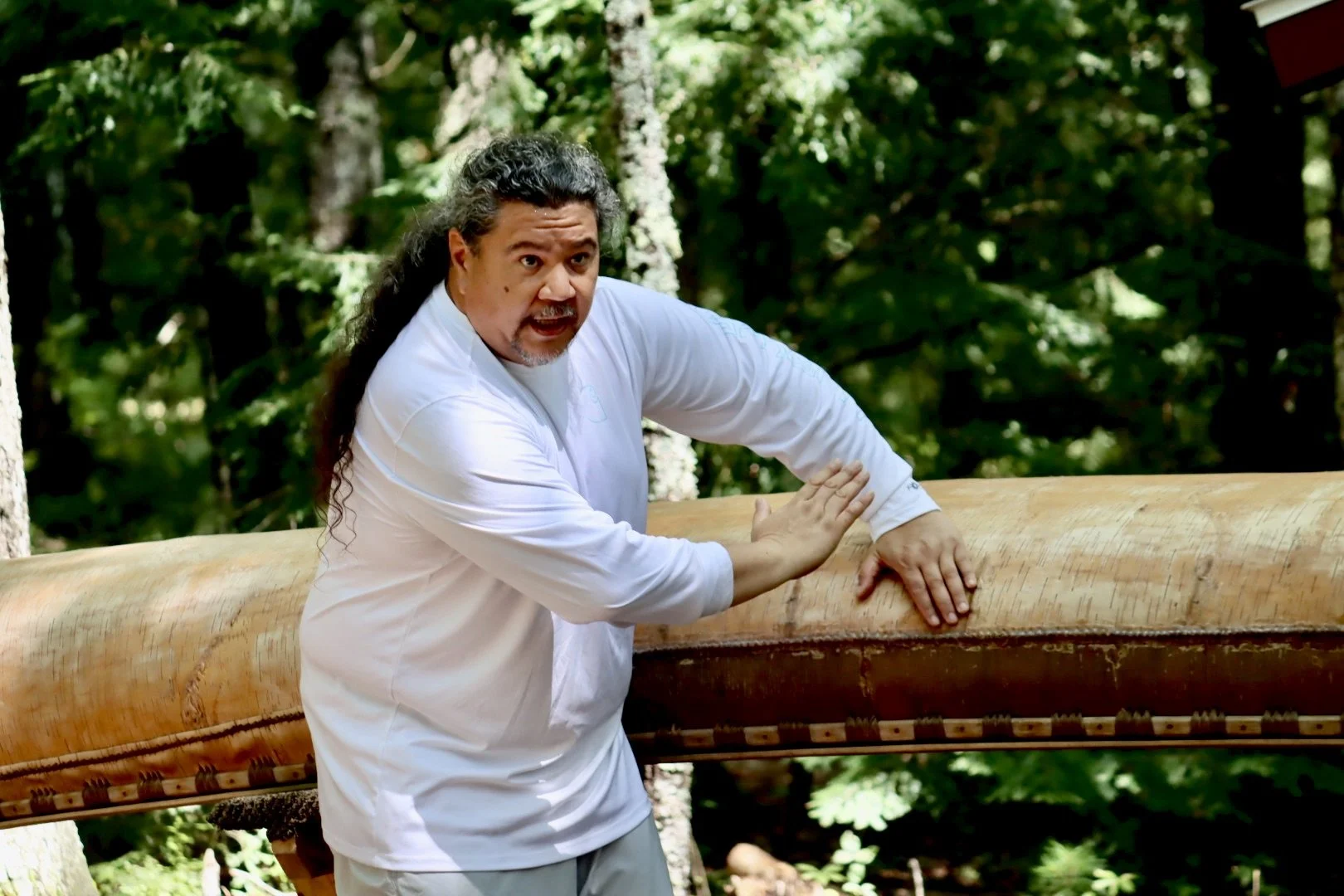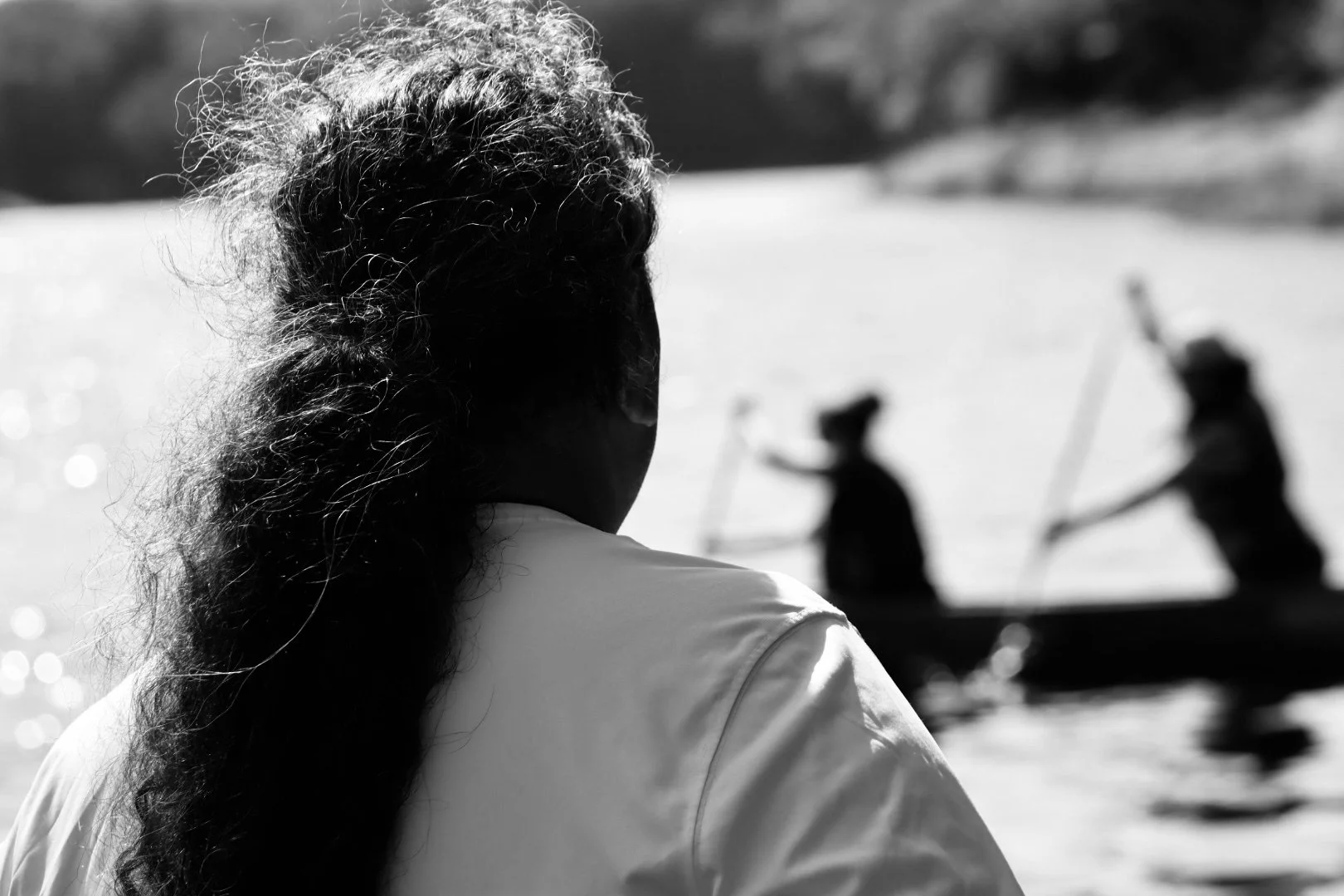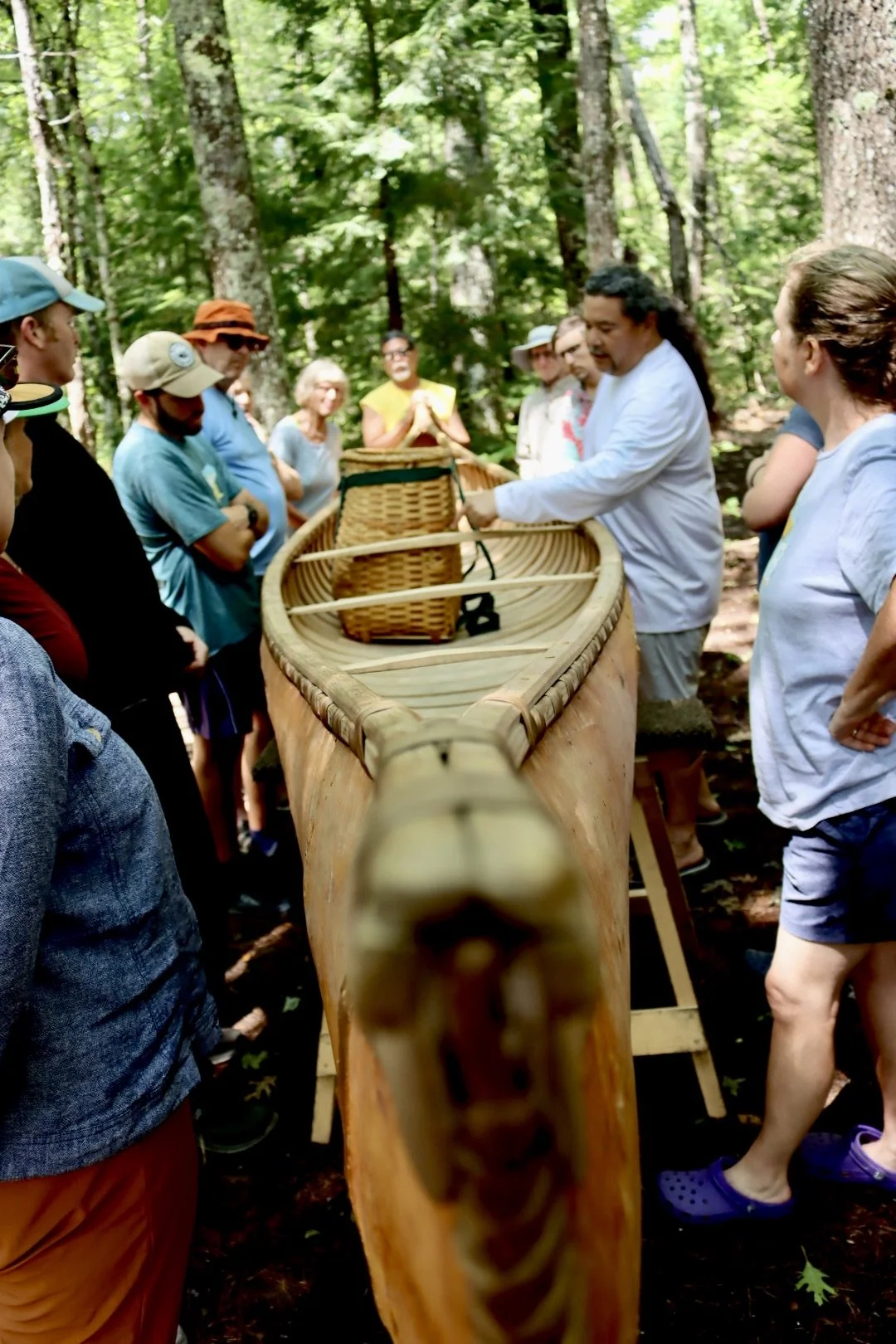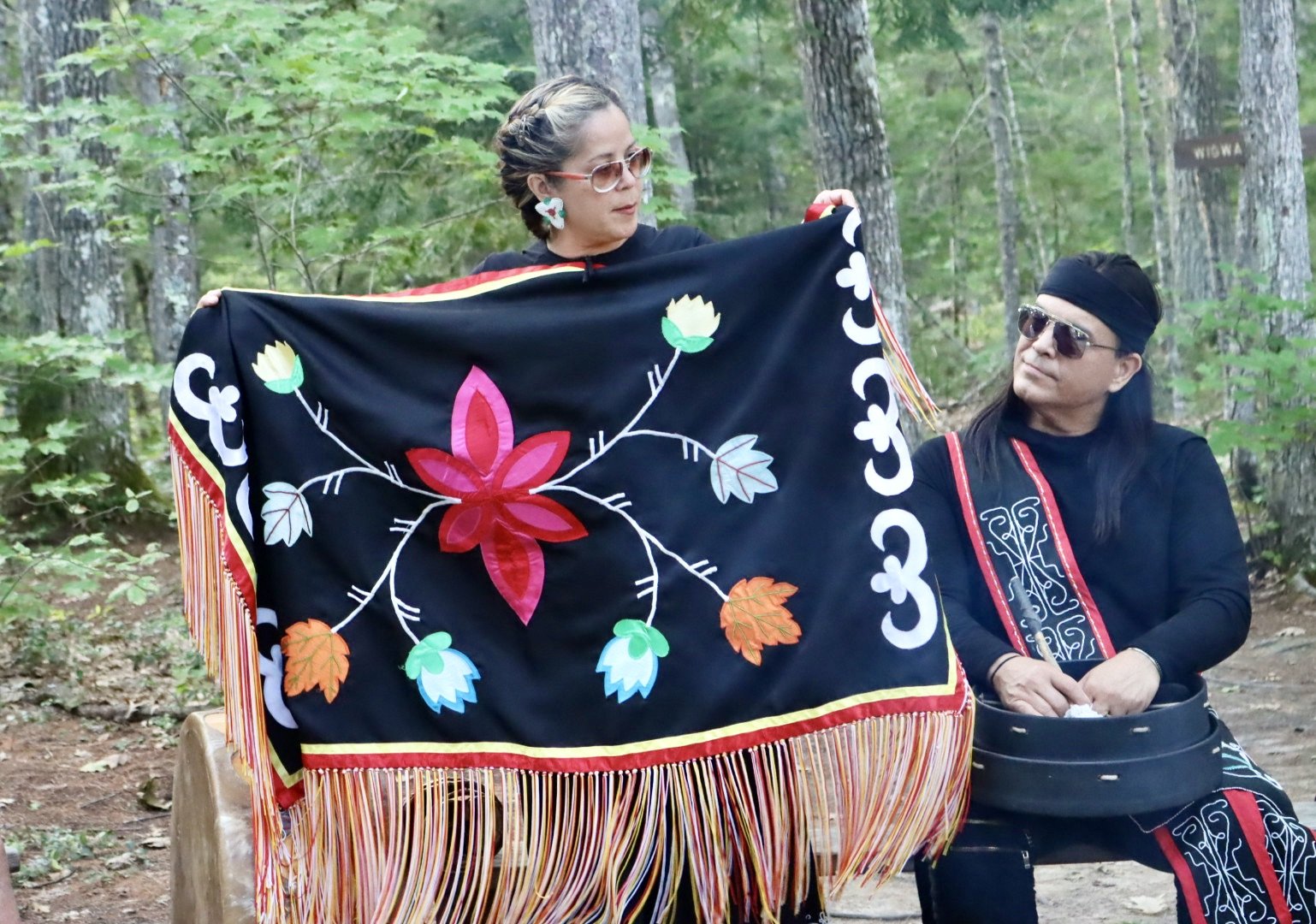
An honor of a lifetime to experience directly the culture and history from the Penobscot Nation~
Way of the Wabanaki Cultural Canoe Trip
Scroll ↓
Jennifer Neptune, a renowned Penobscot herbalist, basket maker and bead work artist, shared her expertise on local medicinal plants as well as basket making artistry.
Master Maine Guide Polly Mahoney is a long time friend and comrade in the canoe guiding world we both love. I have mad respect for this woman. Polly and her husband, Kevin, are founders of Mahoosuc Guide Service and the first couple to receive the Legendary Maine Guide Award from the Maine Dept of Inland Fisheries and Wildlife.
She has co-created a beautiful alliance with the Indigenous peoples of the northeast. Because of her bridge building and honoring, she is 9 years in guiding directly with the Penobscot Nation. When I realized this was happening, I jumped at the opportunity to participate and photograph this remarkable offering to learn about culture and history directly from our renowned Penobscot guides.
I was taken by Jennifer’s gentle spirit, fierce passion for her tribe and generosity of spirit in sharing traditional Indigenous ecological knowledge.
Reciprocity Principle ~ Understanding the reciprocal and responsible relationships between and amongst communities and our environments. This principle was exemplified by Jennifer Neptune and her teachings around how all is animate and referred to as “who” rather than “what” or “it”. To the right is braided sweetgrass, used to create strong containers. The Reciprocity Principle honors all of life in nature and when someone is needed (sweet grass, fish, moose, bark, for example) with permissions, with reverence and with gratitude. Such a beautiful way of living as one with Nature.
The Penobscot River watershed is the traditional tribal land where the Penobscot peoples lived a semi-nomadic life, seasonally migrating from the mountains to the sea throughout the watershed. The Penobscot people were made to give up almost all their ancestral lands, a process complete by about 1820, when Maine became a state.
The state “gave” the Penobscot Nation the islands on the Penobscot River to make their way on, their reservation. At that time, the river was an unregulated dumping ground from the mills effluent, the logging industry and sewerage. The many dams ended the migratory fish routes annual pilgrimage upstream, which terminated the life-blood of a main, seasonal food source for the Penobscot. A travesty.
Due to the Clean Water Act, Indigenous policy makers and greater water consciousness, the river is restoring. A beautiful resource still needing protection and dam removal as to return to its free-flowing, natural state.
Penobscot guide Ryan Mitchell gets up close and personal with this immature bald eagle.
Chris Sockalexis is a trained archeologist and serves as the Penobscot Nation’s Tribal Historic Preservation Officer. As such, he is very knowledgeable about the Penobscot’s ancestral history going back 13,000 years.
A skilled drummer and singer, Chris also demonstrated traditional drumming and singing techniques. He generously shared about the role of music in Penobscot ceremonies, celebrations, and storytelling.
There is such a rich artistic heritage of the Penobscot people and the vital role music plays in their culture. It truly was an inspiration to be in the midst of such long and lasting tradition
Jason Firefly Brown and Donna Decontie were exceptional in their dancing, singing, drumming and display of bead work in the celebration of ceremony, life and nature. It was a joy to be with such positive, talented and powerful people! Donna crafted all the bead and stitch work. It often symbolizes tribal agreements, kin and values.
James E. Francis, Sr. is Penobscot Nation’s Tribal Historian, where he studies the relationship between Maine Native Americans and the landscape. James is an historical researcher, photographer, filmmaker, and graphics artist. Prior to working at the Penobscot Nation, James worked for the Wabanaki Studies Commission helping implement the new Maine Native American Studies Law into Maine schools. James co-produced a film, Invisible, which examines racism experienced by Native Americans in Maine and the Canadian Maritimes.
Source: https://www.portlandmuseum.org/magazine/james-francis-storiesofmaine
Jason Pardilla is a birch bark canoe maker. His pride and passion for carrying this tradition forward was palpable. A very specific white birch tree is needed to create this craft and they are more and more rare and challenging to find.The bark needs to be a very specific thickness, length and width, free of branches, from the bottom of the trunk up about 26 feet to work best. It can take weeks to find such a tree. Extracting it takes precision, skill and patience. All of this is done with great reverence and appreciation.
Witnessing James Francis’ breadth and depth of cultural knowledge was both humbling and grounding. My system found rest and reassurance in his company.
What a kind and generous person to allow us to try out this amazing canoe.
I dare speak for the group as I say we are deeply grateful to the Penobscot Nation and Mahoosuc Guide Service for such a rich and beautiful experience. Thank you.
Tribal Timeline
12,000 to 9,500 BP (Before Present) – Paleo-Indian Period
9,500 to 3,000 BP – Archaic Period
3,000 to 500 BP – Ceramic Period
1524 – Giovanni da Verrazano is credited with the first ‘documented’ contact with Native American in Maine.
1525 – Estevan Gomez (ca. 1483-1538), Portuguese exploring for Spain, sails up Penobscot River to site of present–day Bangor
1568 – David Ingram is credited with the first documentation of a Penobscot Chief, Bessabez
1604 to 1605 – Samuel de Champlain cartographer sailing for France charts the Maine coast; Sieur de Monts, a French Nobleman, tries to establish permanent settlement on St. Croix Island.
1605 – Port Royal is the first permanent European settlement in North America north of Florida, having been founded by Pierre Dugua, Sieur de Monts and Samuel de Champlain.
1605 – George Weymouth, sailing for England, captures and kidnaps five Penobscot Men.
1607 – George Popham and Raleigh Gilbert, along with the captured Indians from Weymouth, establish English settlement, Fort Saint George (the Popham Colony), at the mouth of the Kennebec River, this settlement failed.
1611 – Father Pierre Baird, a French Jesuit, establishes Indian mission at Indian Island on Penobscot River.
1607 to 1615 – Micmac Wars (aka Tarratine Wars)
1615 – Death of Bessabez
1616 to 1619 – The “Great Dying,” 75 to 90 percent of Native Americans die from European diseases.
1635 – French establishes Fort Pentagoet on the eastern shore of Penobscot Bay.
1638 to 1655 – Beaver Wars, conflicts with the Mohawks over territory during the Fur Trade
1670 – Jean Vincent de Abbadie, the Baron of Castin arrives in Maine.
1675 to 1678 – King Philips’ war breaks out in Massachusetts by Wampanoag leader Metacom.
1688 to 1699 – King William’s War
1703 to 1713 – Queen Anne’s War, bounties offered for Native American scalps.
1721 to 1726 – Dummer’s War (aka Lovewell’s War)
1724 – Massacre at Norridgewock. English sack and burn Indian village on the Kennebec, Fr. Sebastian Ralse is killed in attack.
1725 to 1726 – Indians and settlers reach accord in Dummer’s Treaty, ending Dummer’s War.
1744 – King George’s War begins.
1754 – French and Indian War begins.
1755 – Scalp Proclamation issued by Massachusetts Bay Colony
1775 – Penobscot Chief Joseph Orono with a Penobscot Delegation pledge alliance with Americans in Watertown, Massachusetts
1790 – Trade and Non-intercourse Act passed by United States Congress to protect Indian land transfers
1796 – Treaty between Massachusetts and Penobscot.
1818 – Treaty between Massachusetts and Penobscot which established reservation lands.
1820 – Maine becomes a state as part of the Missouri Compromise.
1820 – John Neptune guides Joseph Treat as he surveys the Penobscot, Allagash and St John Rivers.
1833 – Four Penobscot Townships are “sold” by the State of Maine.
1846 – Writer and transcendentalist Henry David Thoreau visits Indian Island for the first time.
1853 – Henry David Thoreau hired Joseph Attean as a guide.
1857 – Henry David Thoreau hired Joe Polis as a guide.
1870 – Joseph Attean dies on the Fourth of July at Grand Pitch Falls near Millinocket, Maine.
1893 – Joseph Nicolar publishes Life and Traditions of the Red Man.
1897 – Louis Sockalexis, a Penobscot Indian born on Indian Island, becomes the first American Indian to play for a Major League baseball team, the Cleveland Spiders (later the Cleveland Indians).
1880’s to 1917 – Penobscot children are sent to Federally sponsored Residential Schools.
1912 – Andrew Sockalexis runs in the Olympics in Stockholm, Sweden. He finished fourth.
1924 – Native Americans are designated as citizen of the United States.
1946 – State of Maine issues Proctor Report, outlining State of Maine and Indian relations.
1954 –Maine Native Americans given the right to Vote in Federal elections.
1950 – First bridge to Indian Island is completed.
1967 – Maine Native Americans given the right to vote in State of Maine and local elections.
1972 – The Passamaquoddy Tribe and Penobscot Nation file lawsuit for 2/3 of the State of Maine, claiming 12.5 million acres of land granted in earlier treaties, that was not ratified by Congress.
1973 – Maine recognizes Micmac and Maliseet Indians as official tribes, issues free hunting and fishing licenses to all tribal members, acknowledging the right of all indigenous people to hunt and fish.
1973 – The Penobscot Nation establishes the “Original Indian Bingo.”
1975 – Federal Recognition – Passamaquoddy and Penobscots win Passamaquoddy v. Morton, gaining federal recognition – an important first step in the Maine Indian Land Claims.
1980 – Maine Indian Land Claims Settlement Act signed and enacted into law.
2001 – Maine passes Maine Wabanaki Studies Law.
2002 – Penobscot Nation Cultural and Historic Preservation Department is created.
2004 – Penobscot River Restoration Trust established.
To get more informed and to support the
Wabanaki culture,
please visit:


